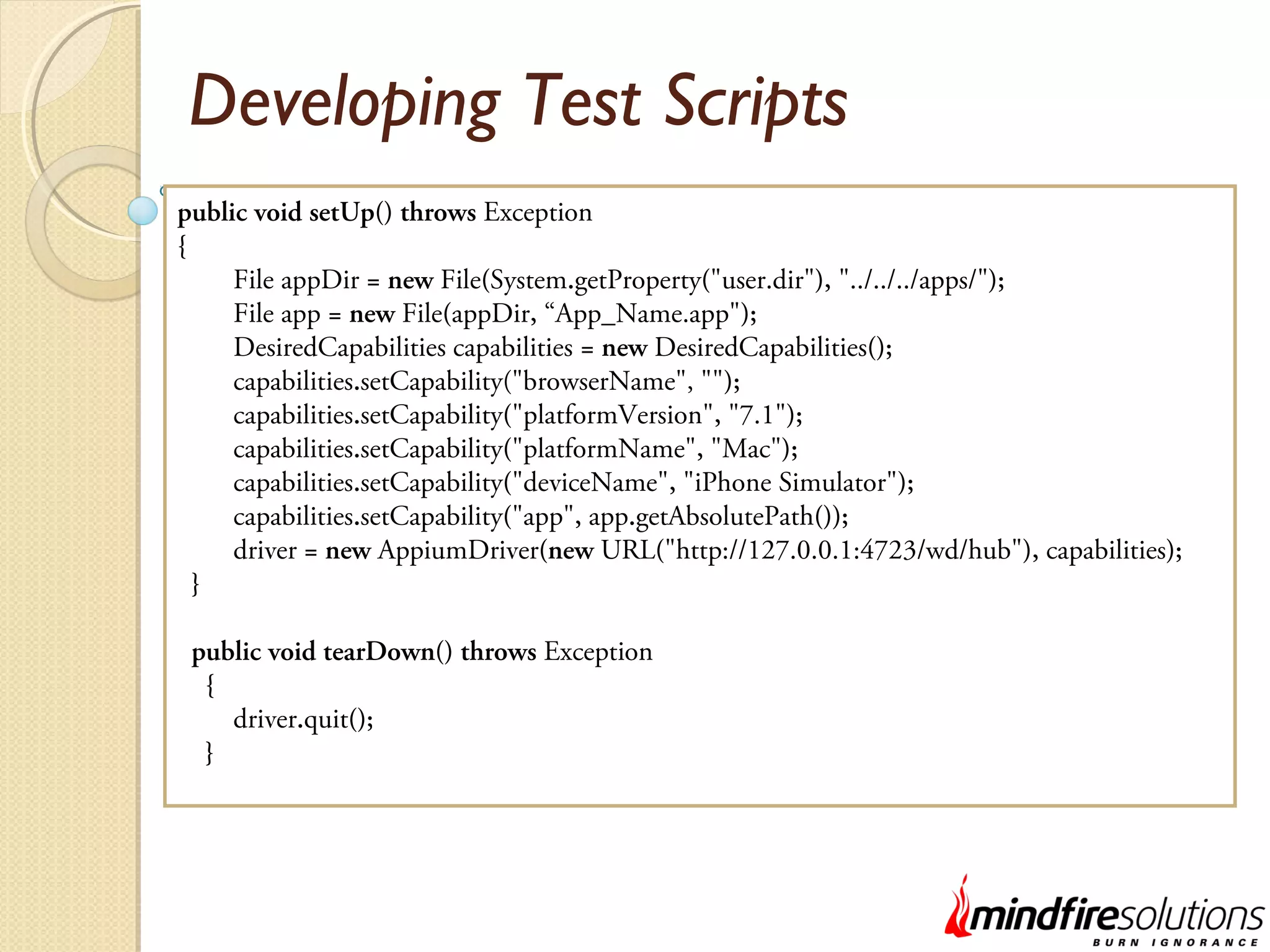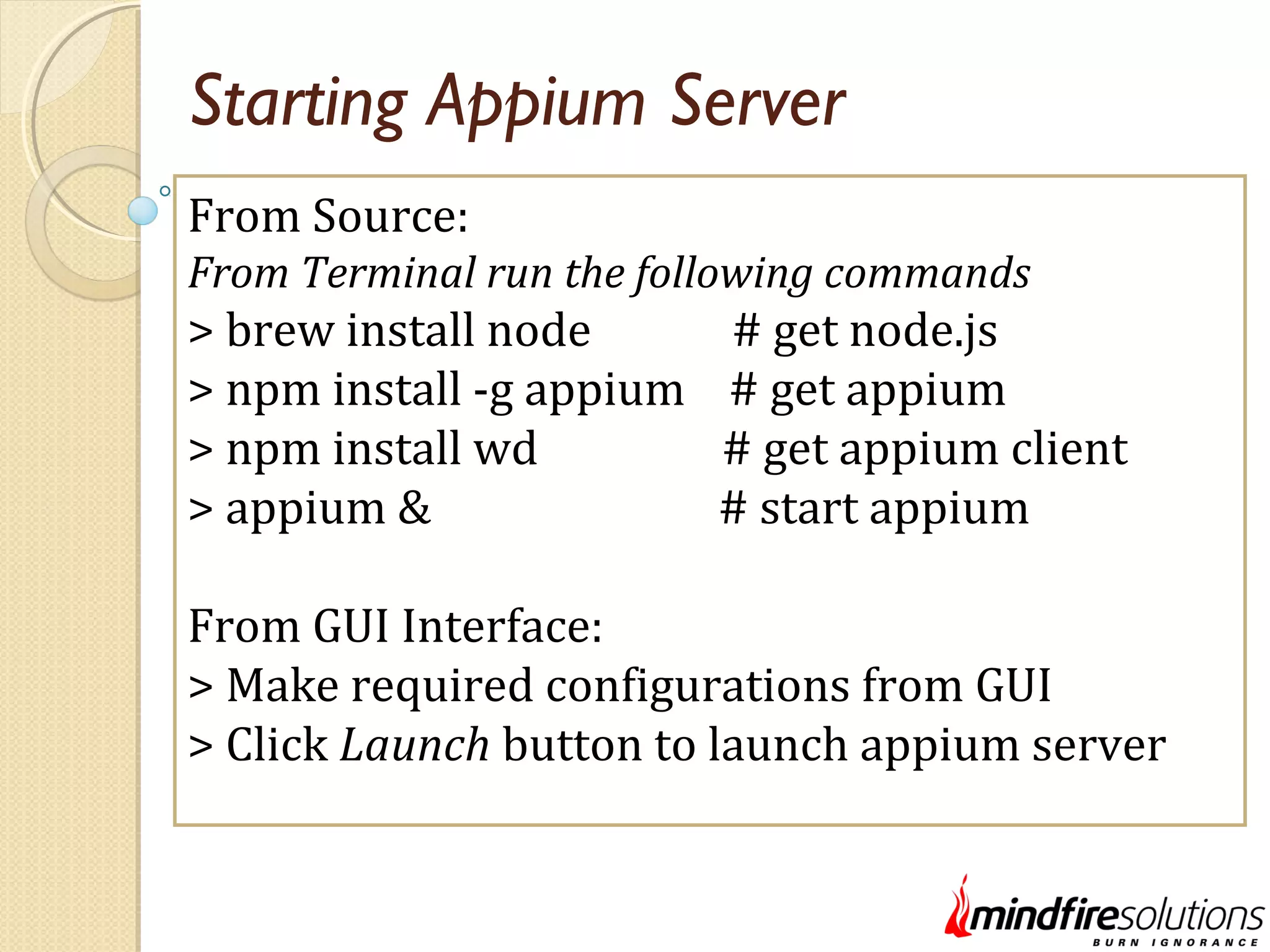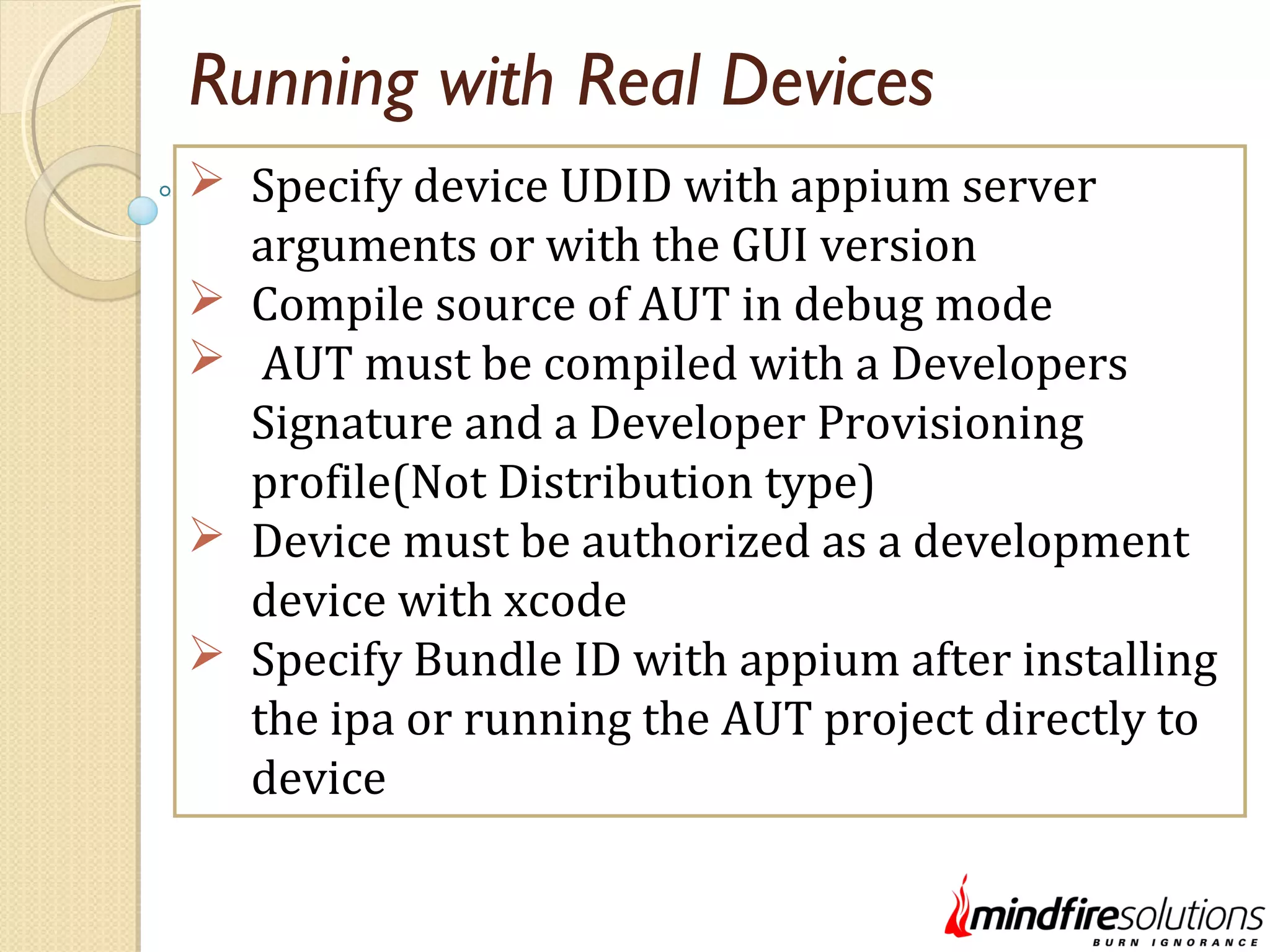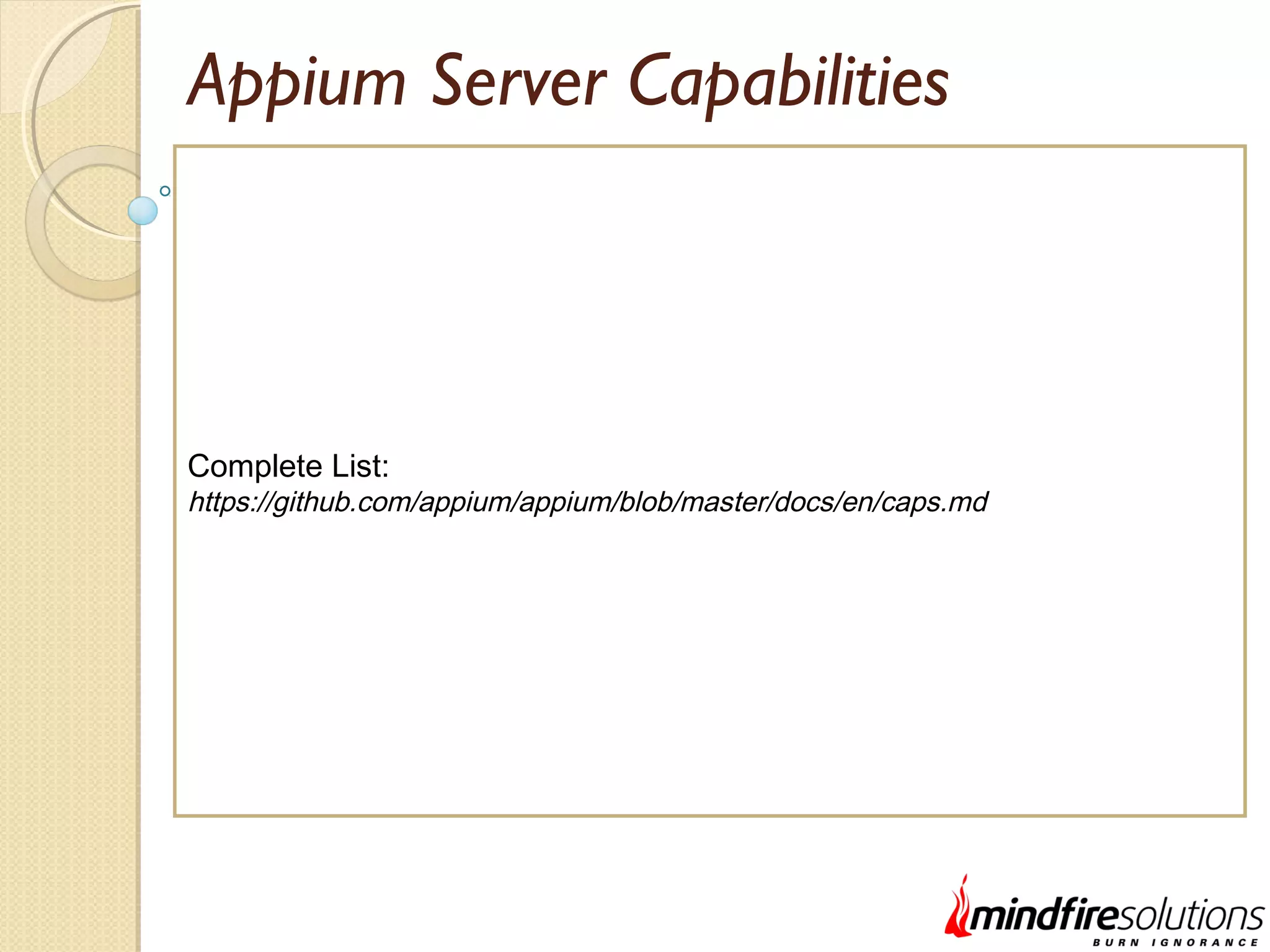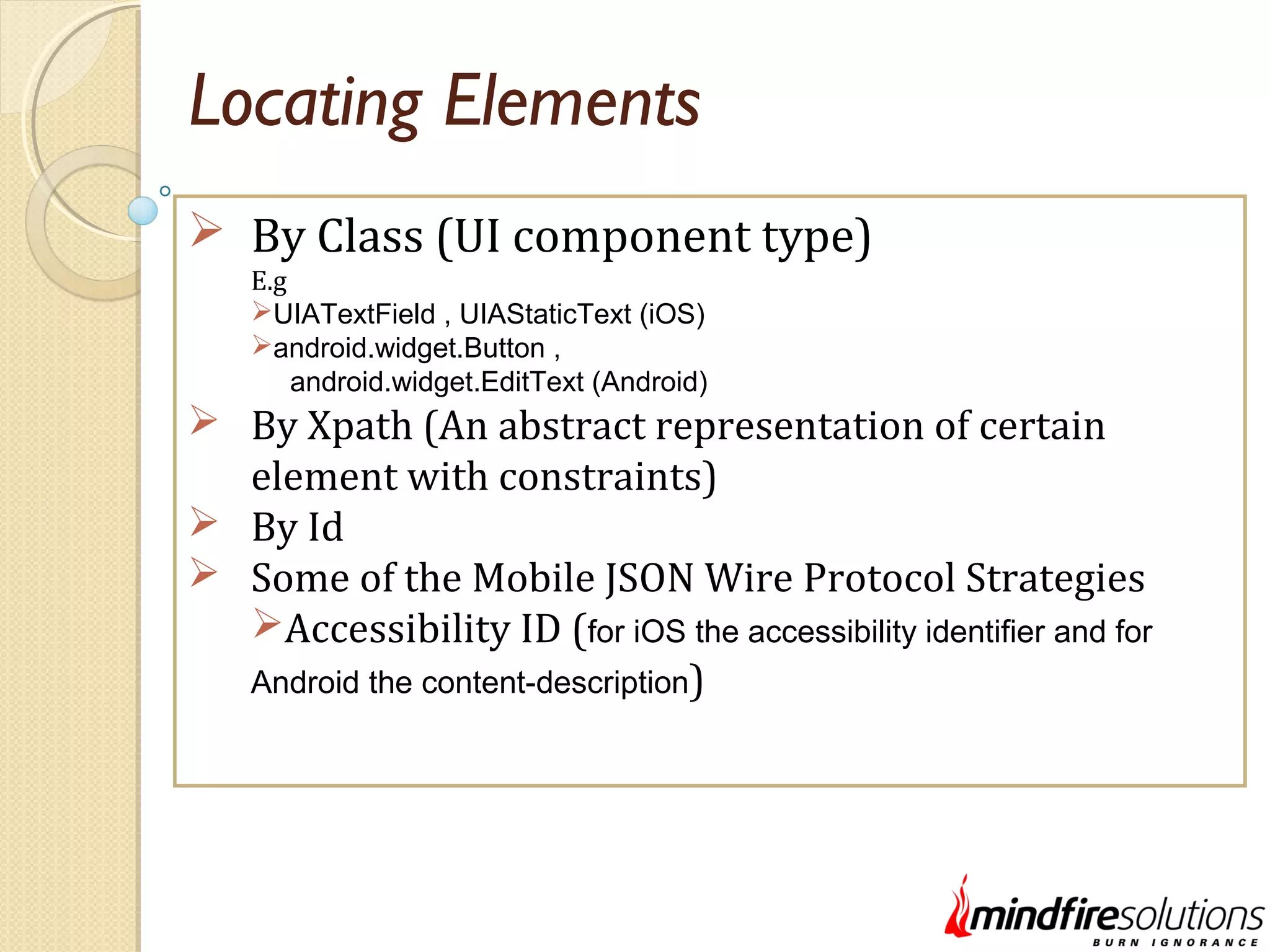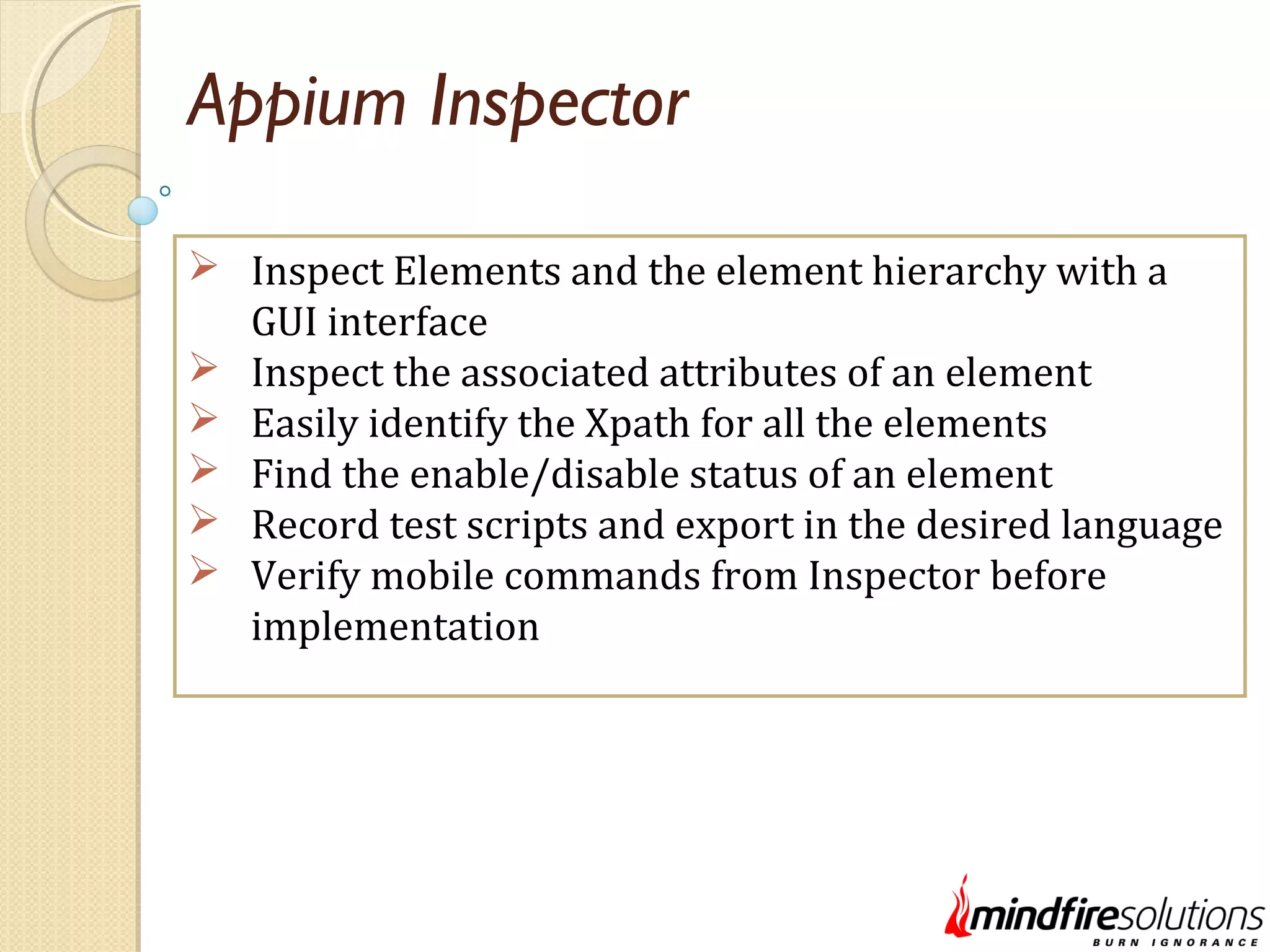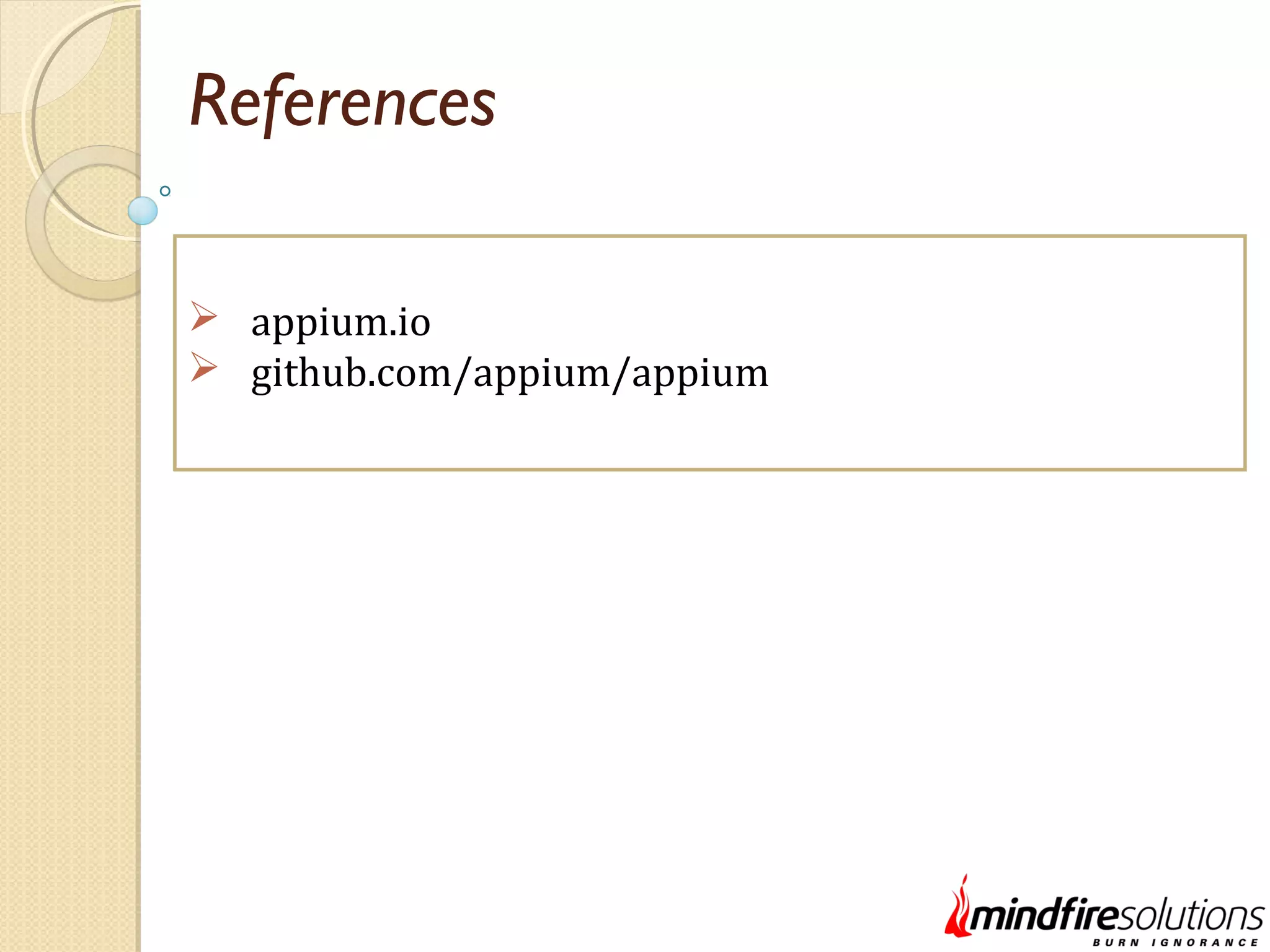The document provides an overview of Appium, an open-source, cross-platform test automation tool for mobile apps, detailing its architecture, features, and limitations. It includes guidance on automating both Android and iOS applications, along with necessary installations, configurations, and sample test scripts. Additionally, it mentions how to run Appium on real devices and simulators, and offers links to resources and references for further information.
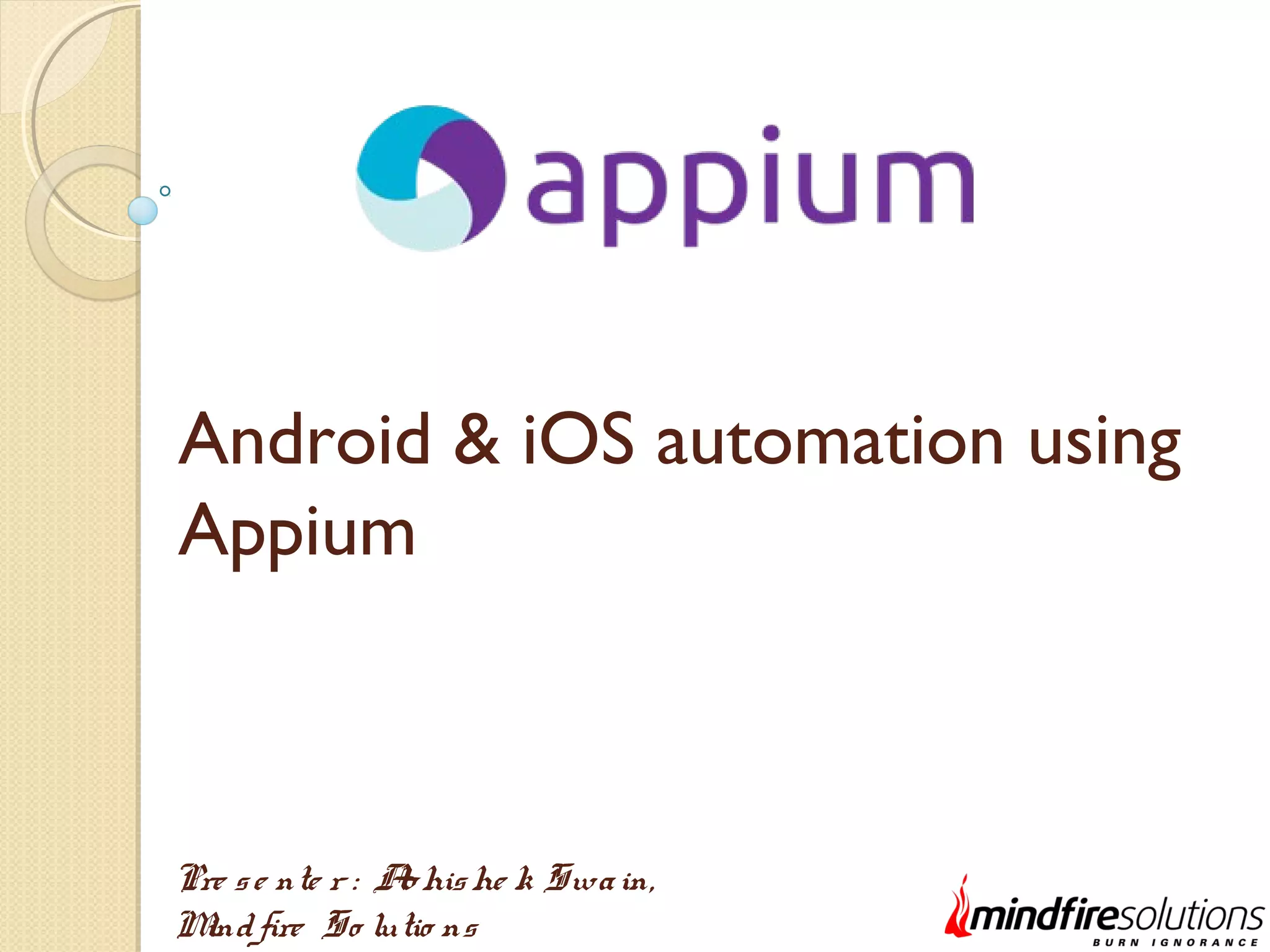
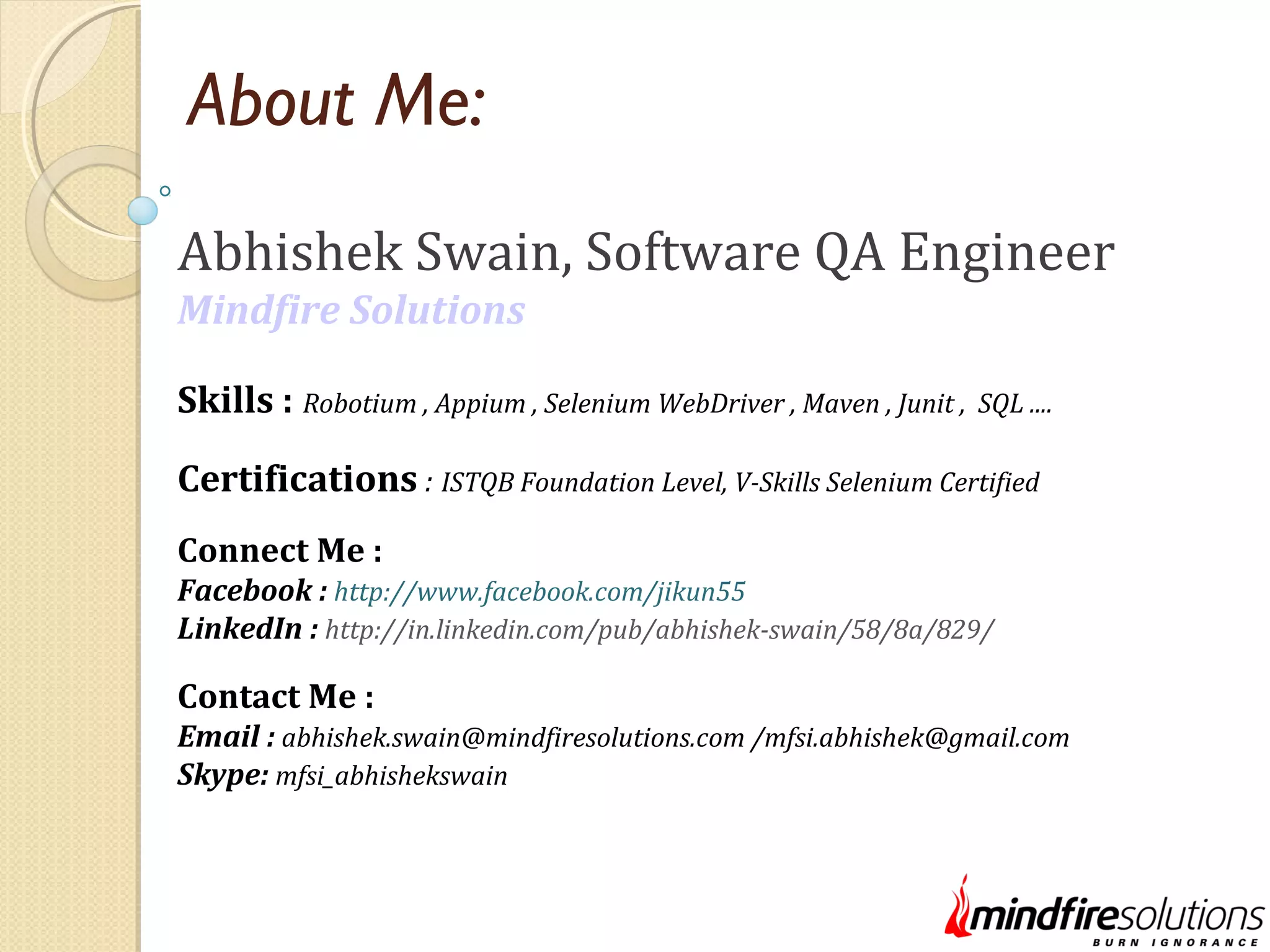
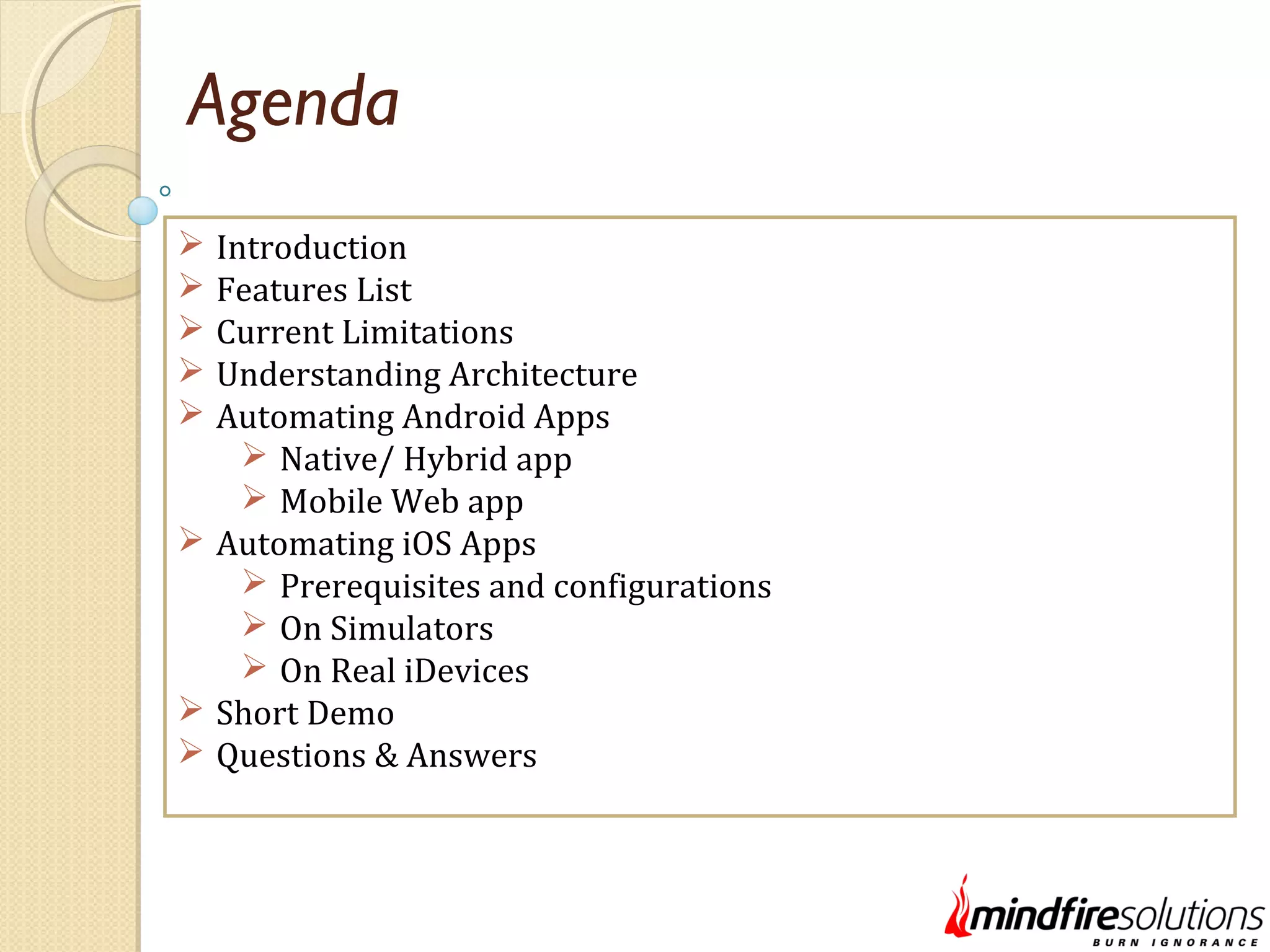
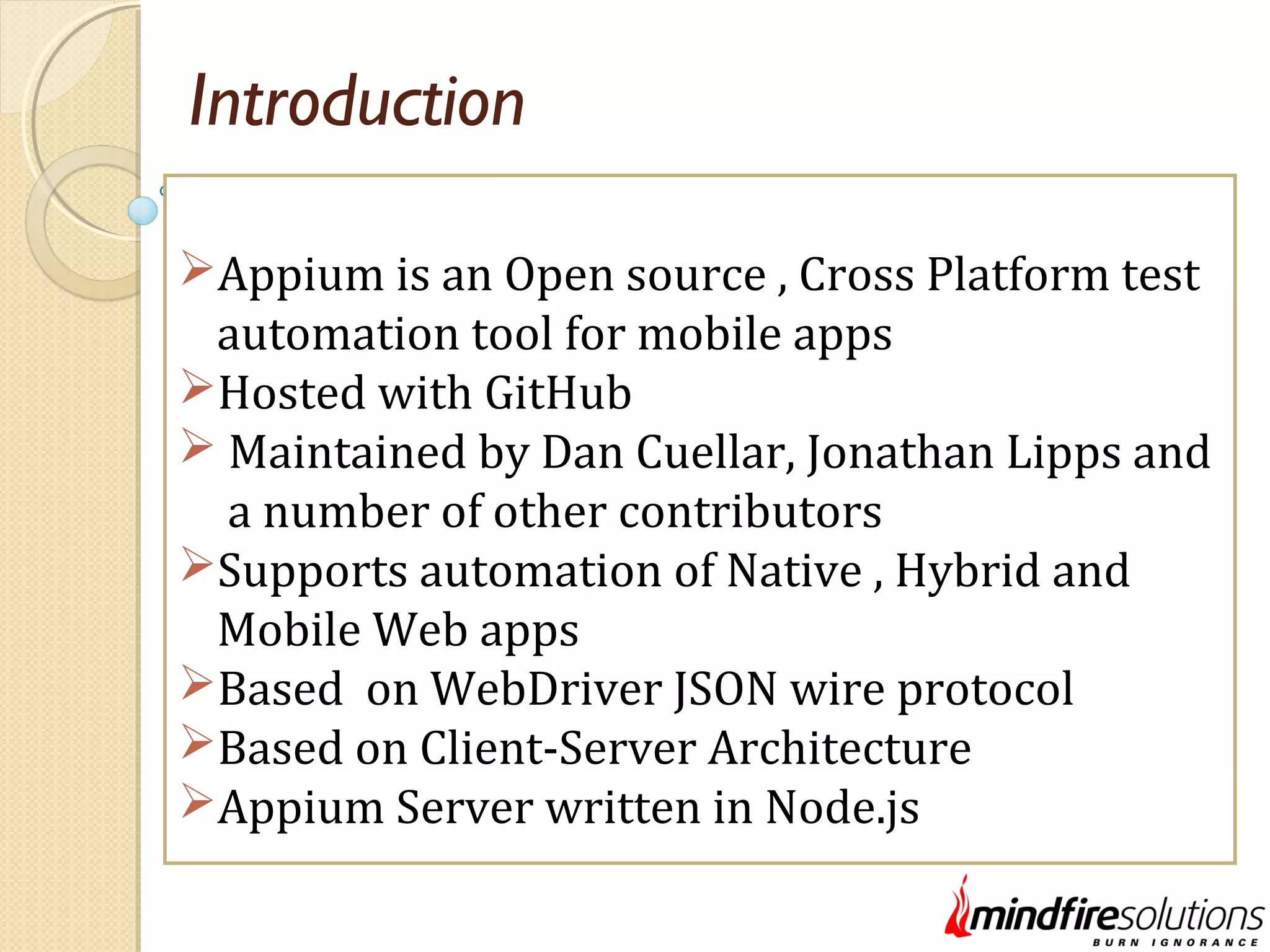
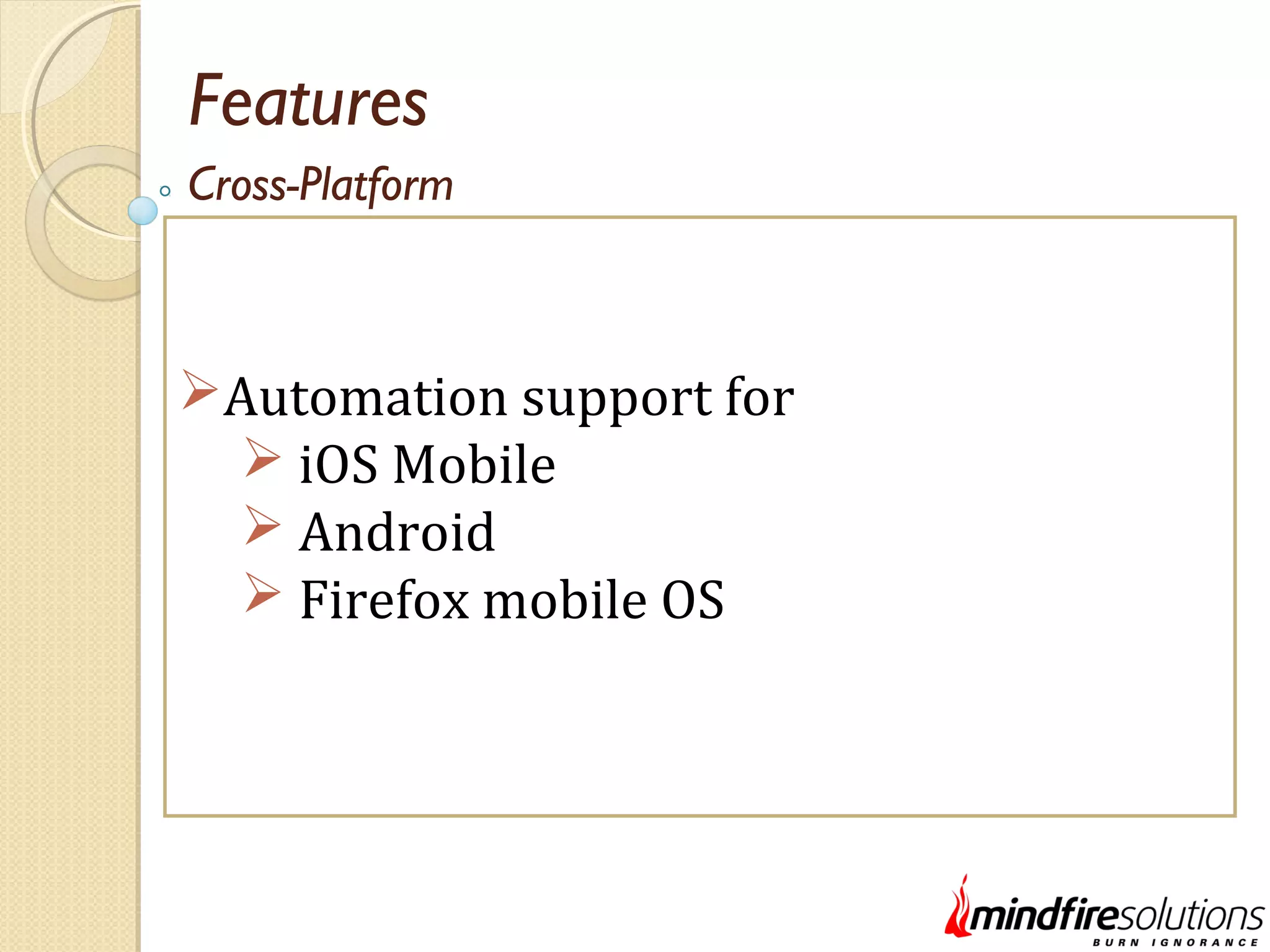
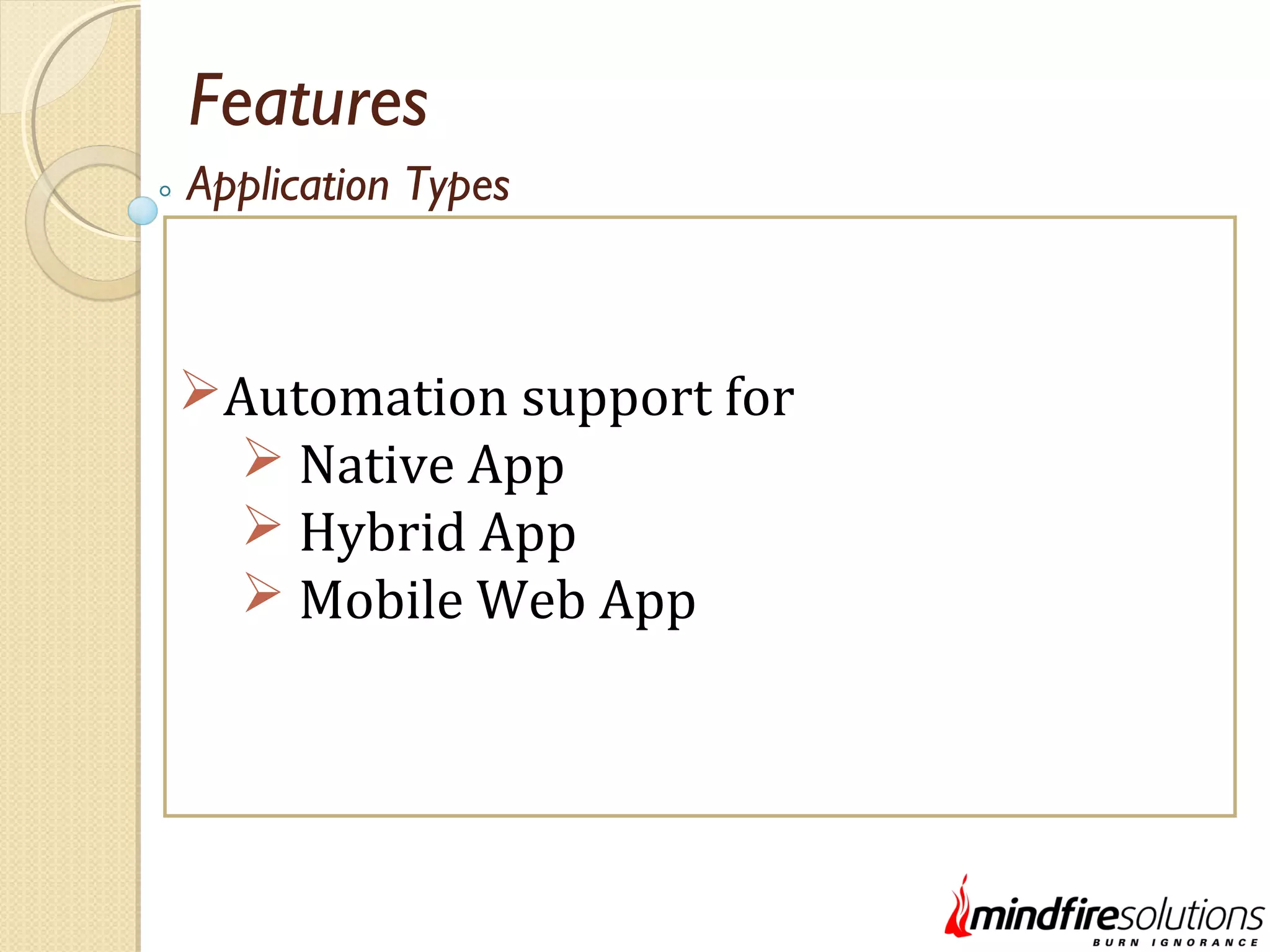
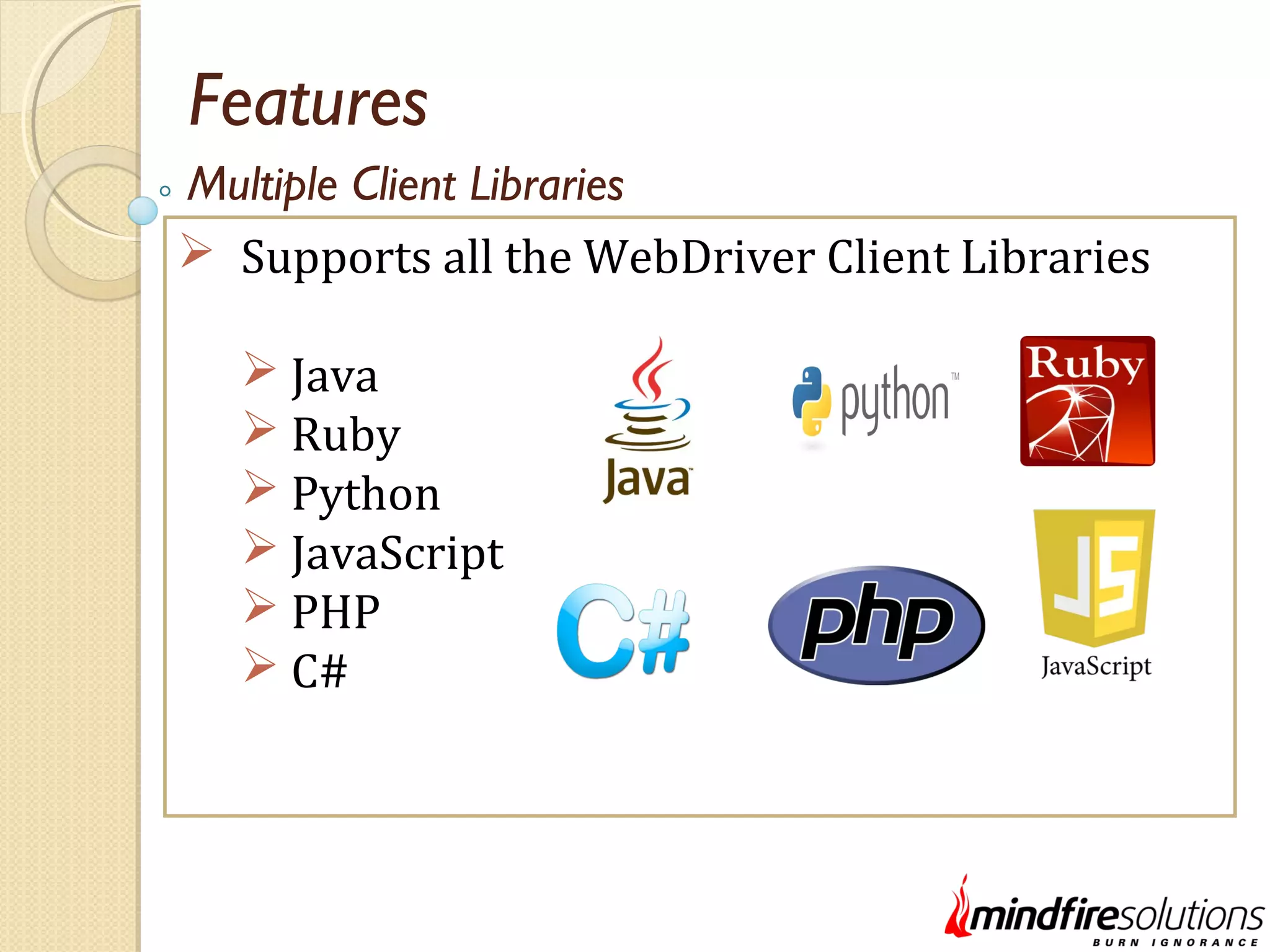
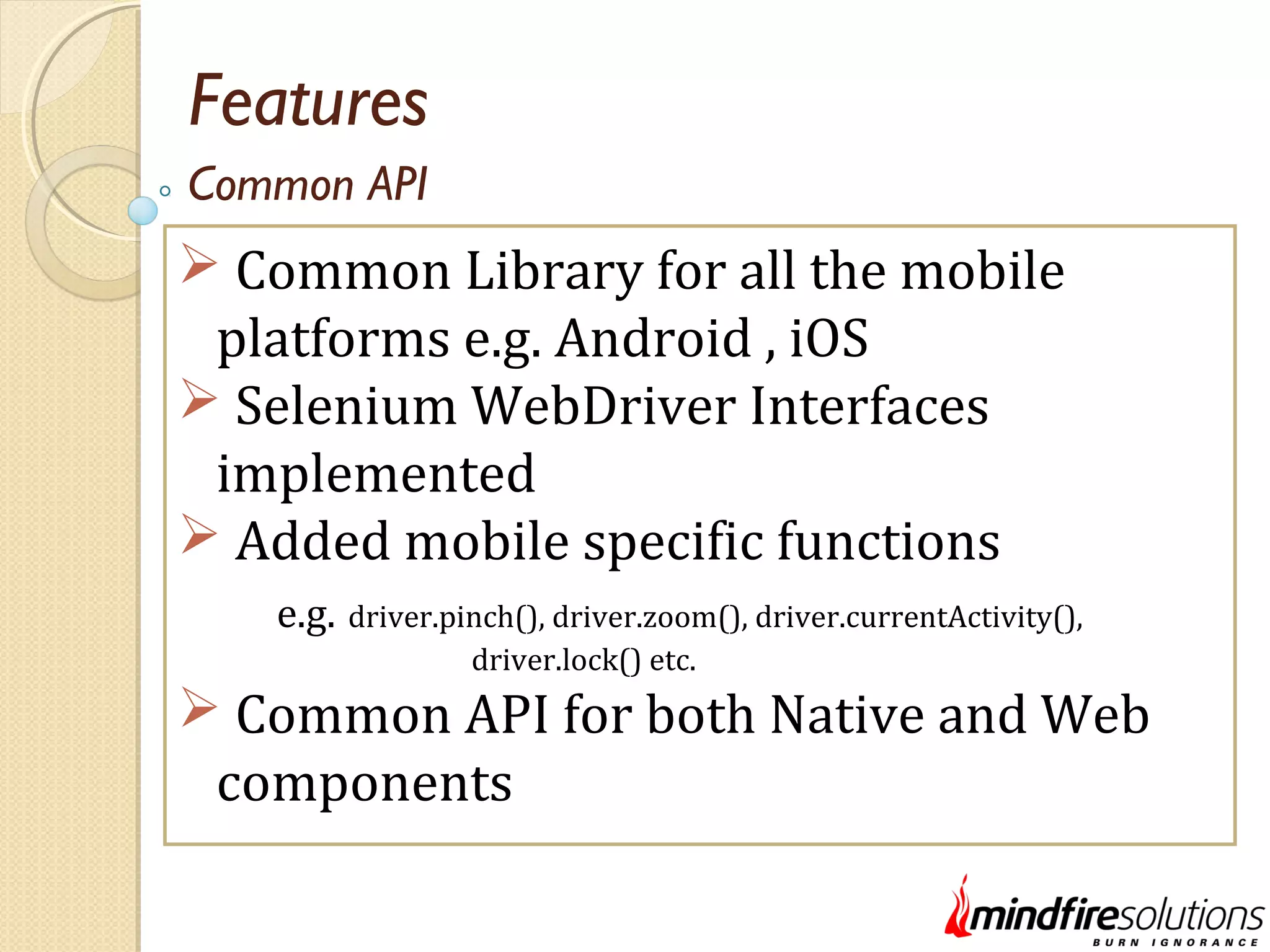
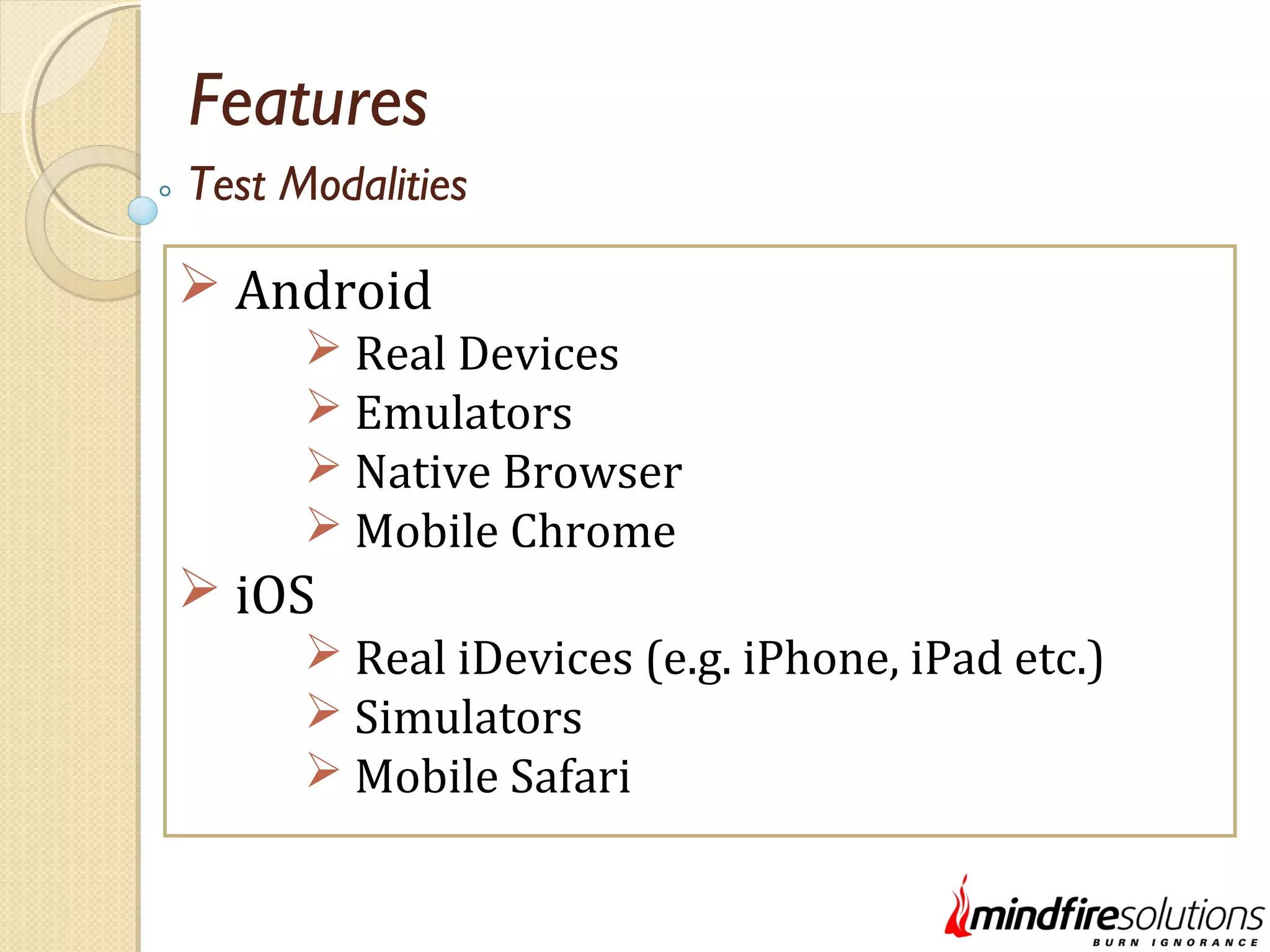
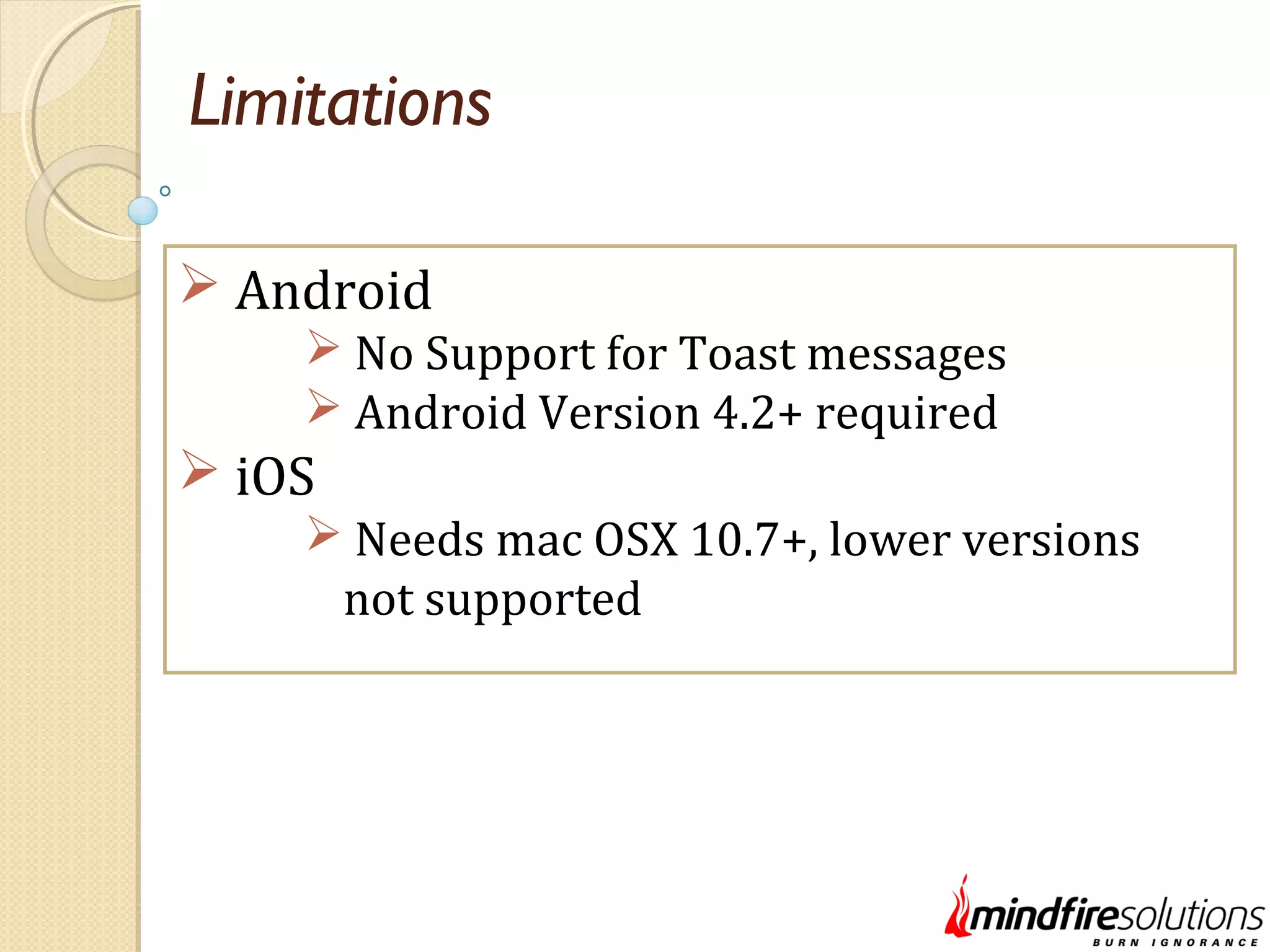
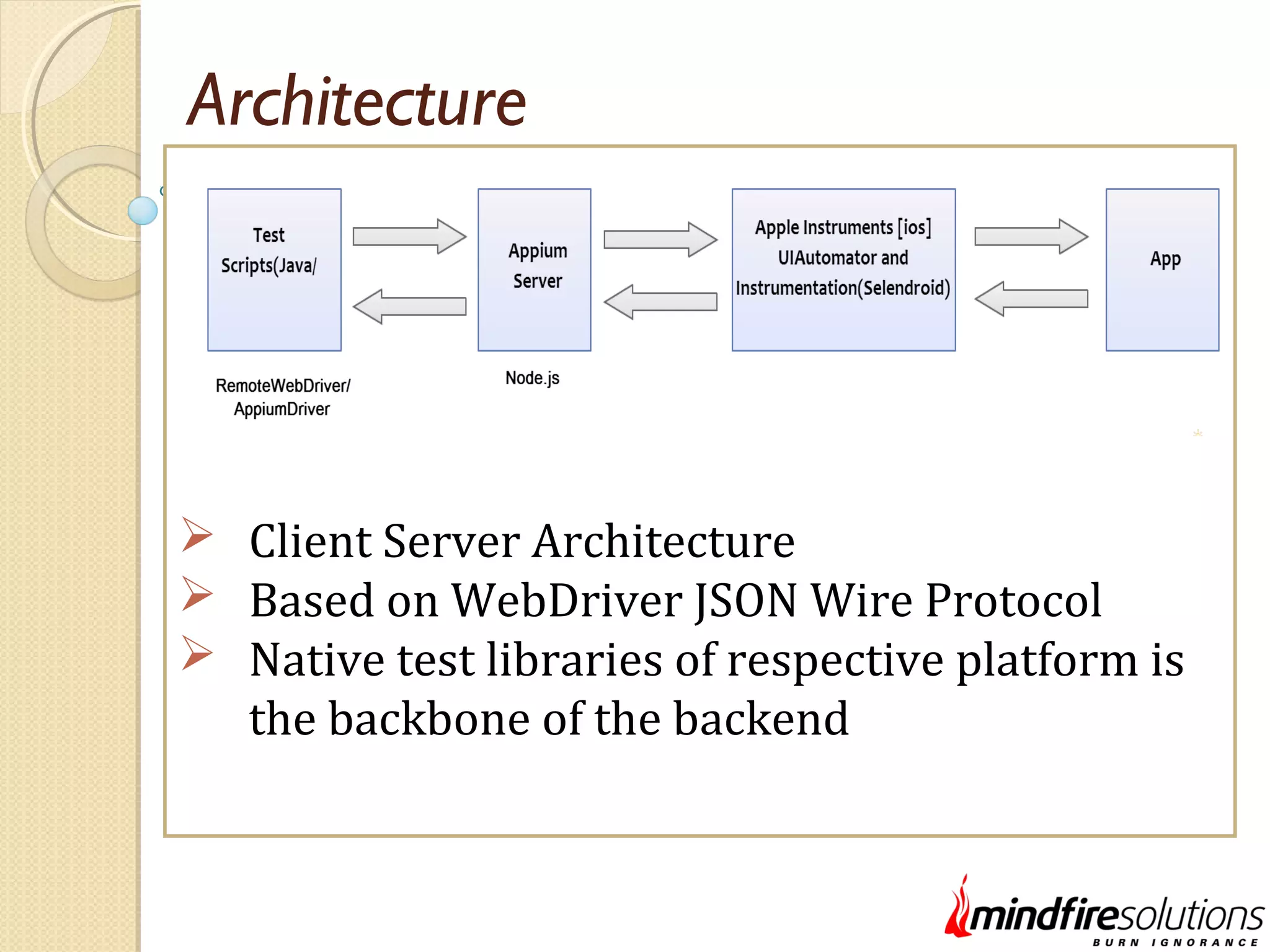
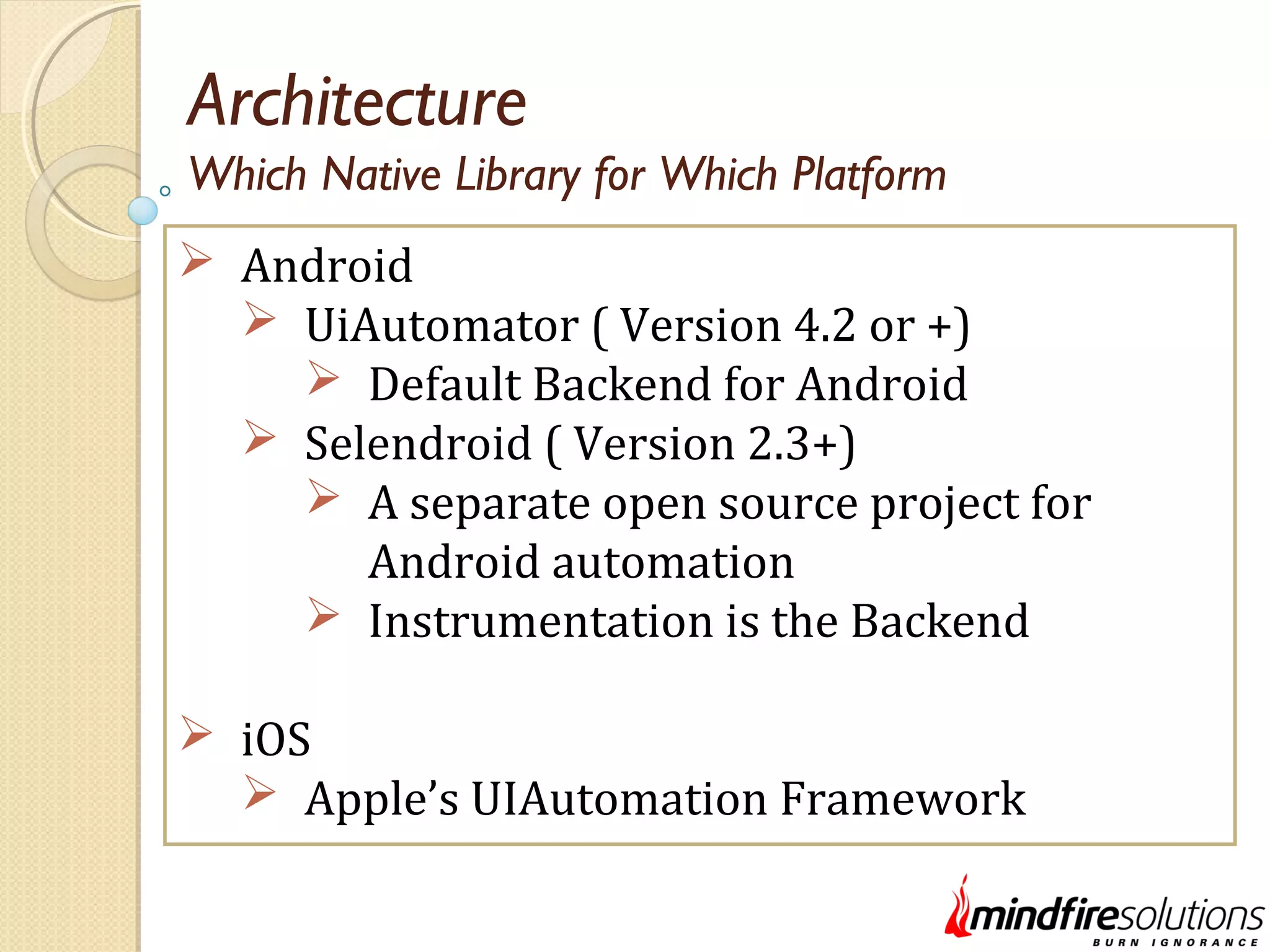
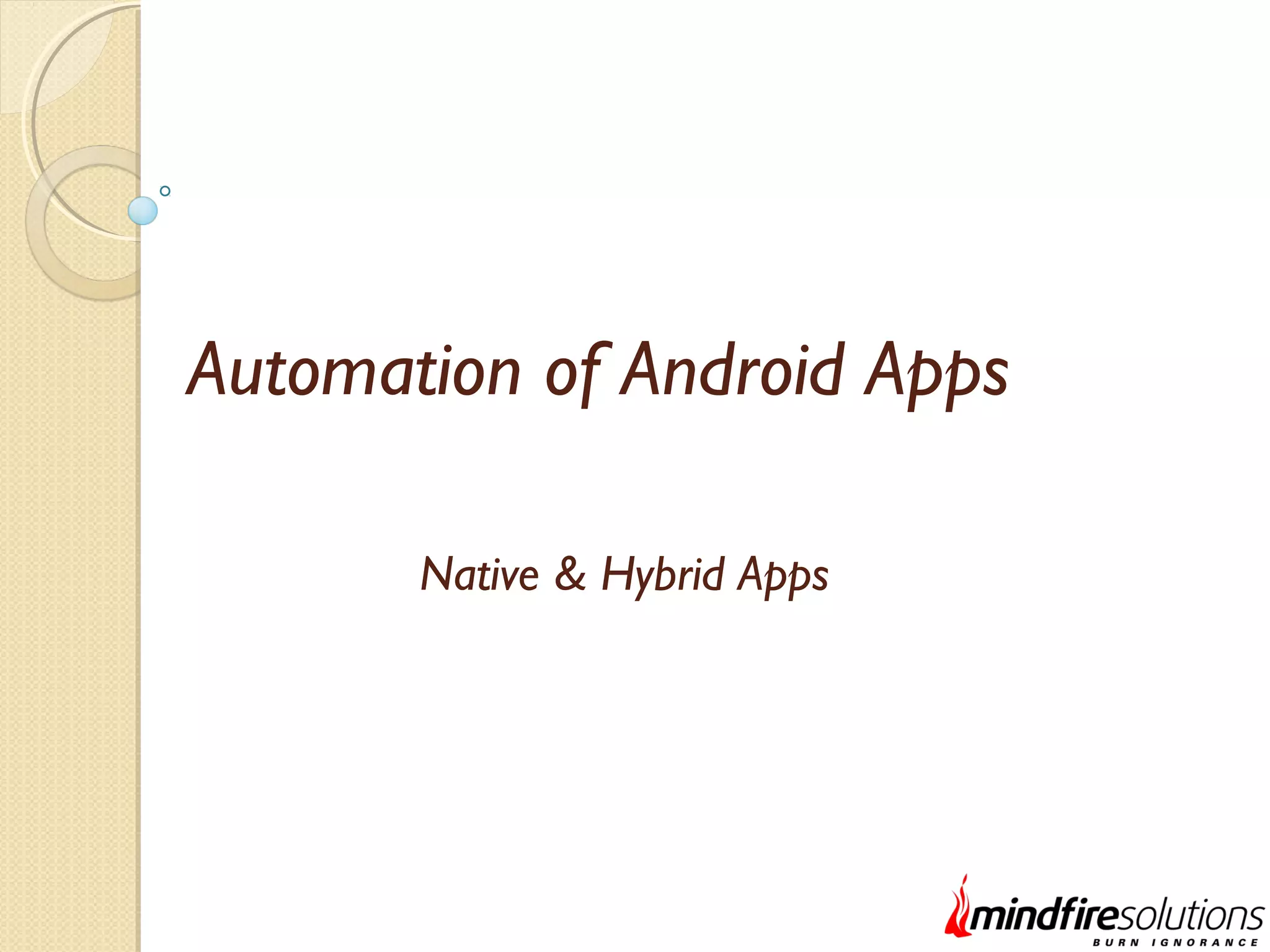
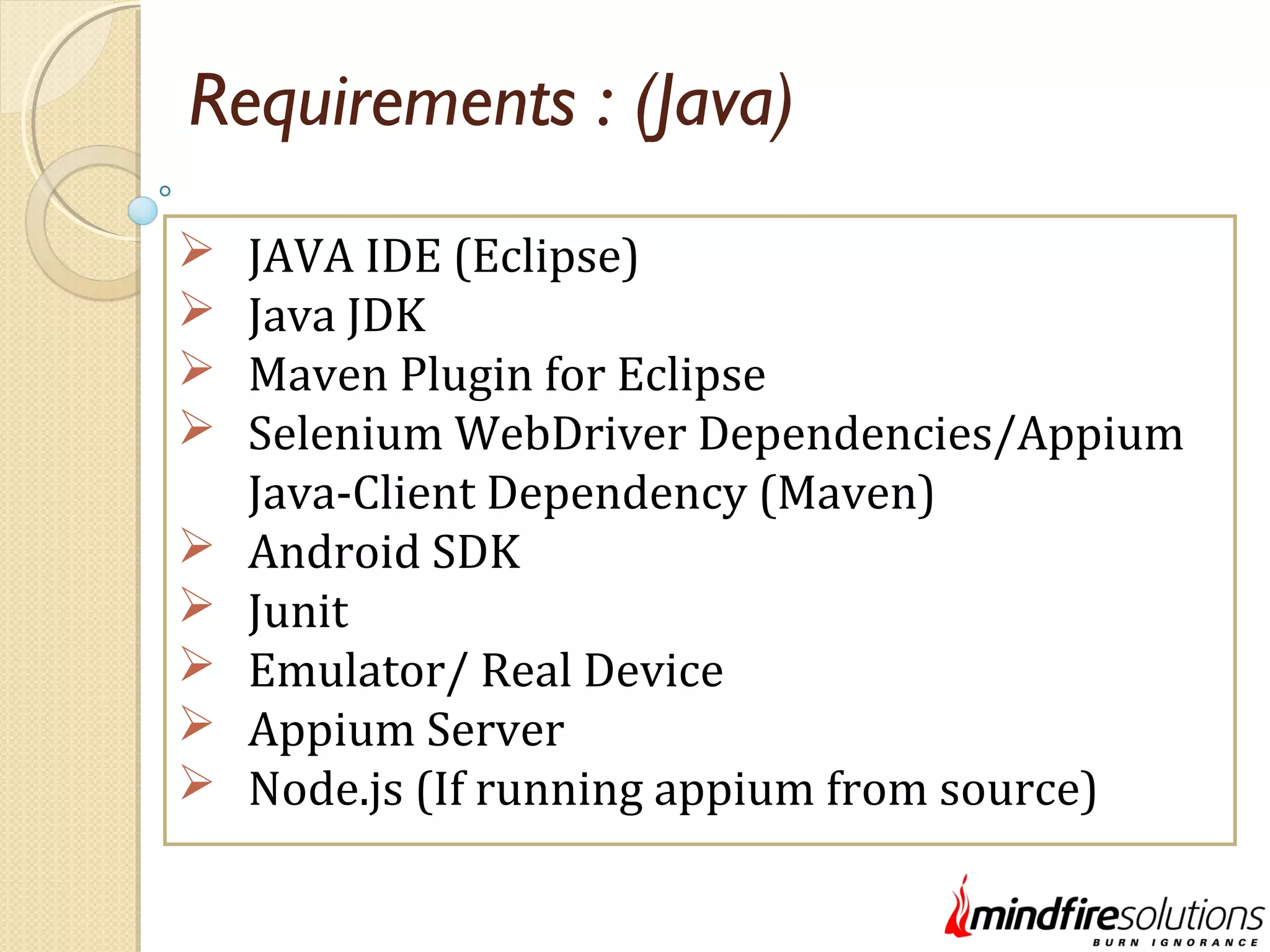
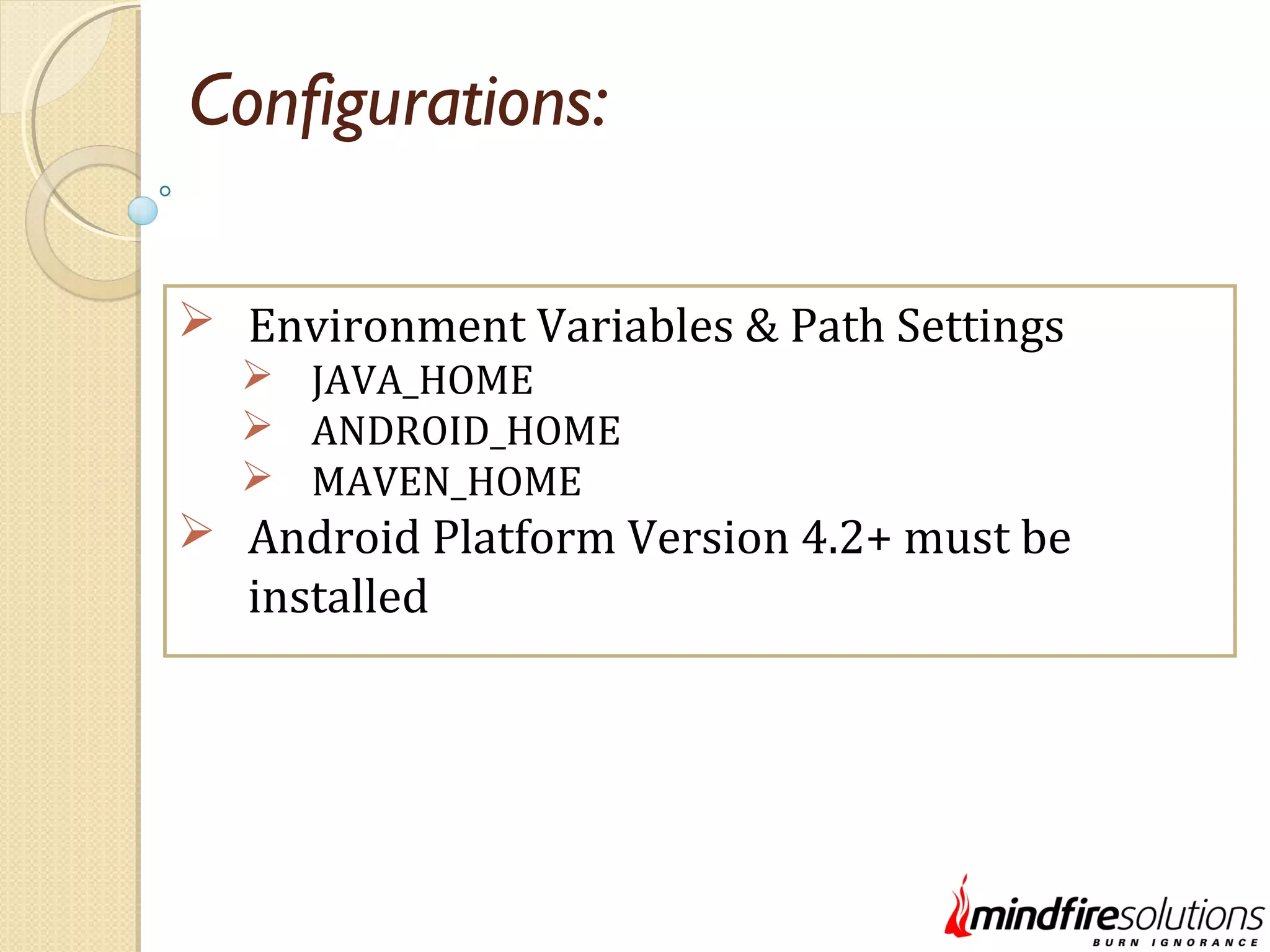
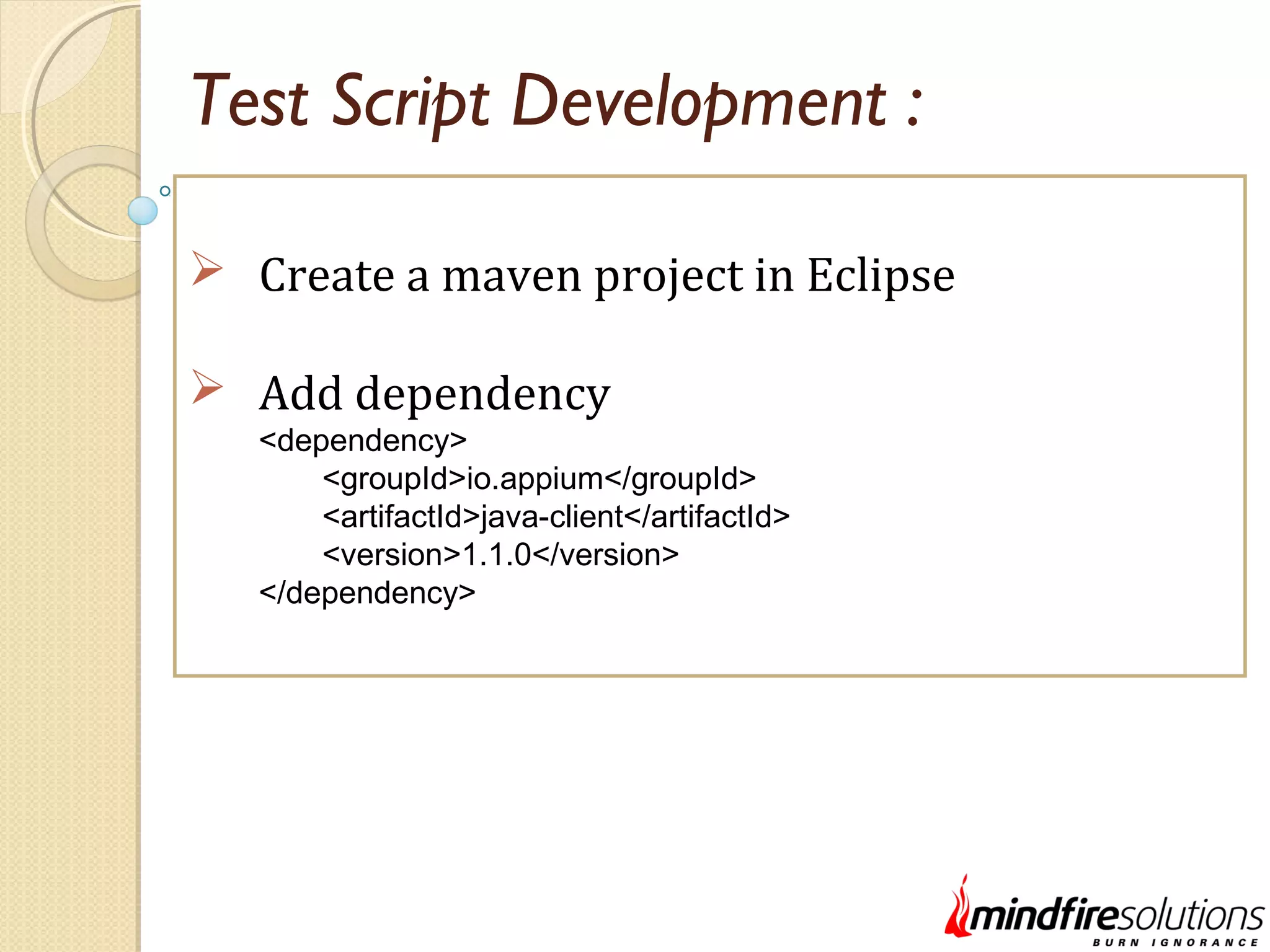
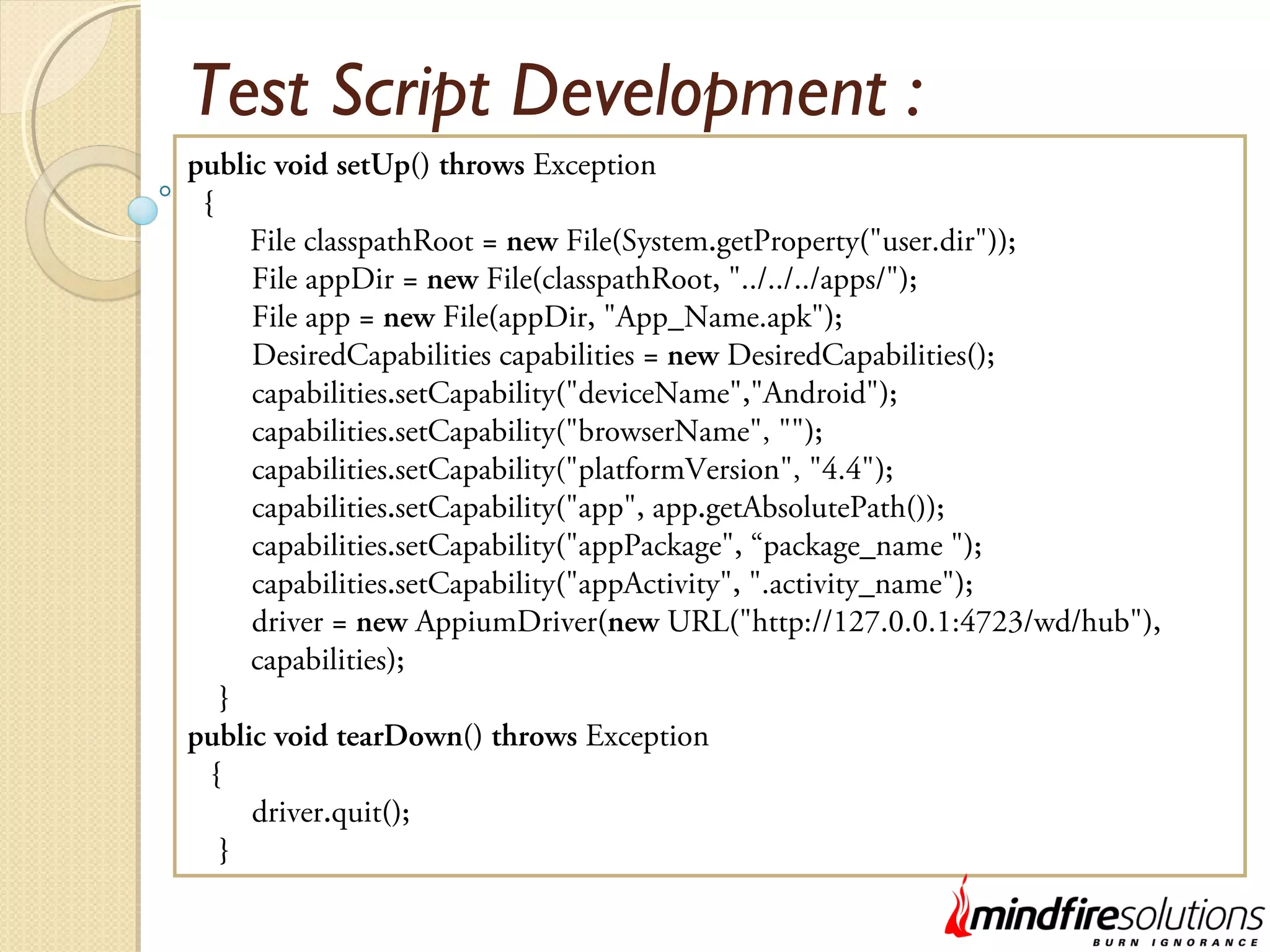
![Starting Appium Server From Source: Install Node.js Download Appium or Clone it using GitHub In cmd navigate to node_modules/appium/bin Run 'node appium [server arguments]' From GUI Interface: Do the configurations as needed from GUI Click launch button to launch appium server](https://image.slidesharecdn.com/androidiosautomationusingappium-140521001934-phpapp01/75/Android-iOS-Automation-Using-Appium-18-2048.jpg)
, appium & [arguments] (mac) --app : To specify the path to the AUT(iOS: .app, android: apk) -U , --udid : Unique device identifier of the connected physical device -a, --address : IP Address to listen on -p, --port : port to listen on --session-override : Enables session override --full-reset : (iOS) Delete the entire simulator folder. (Android) Reset app state by uninstalling app instead of clearing app data. On Android, this will also remove the app after the session is complete. --no-reset : Don't reset app state between sessions -l, --pre-launch : Pre-launch the application before allowing the first session Complete List : https://github.com/appium/appium/blob/master/docs/en/server-args.md](https://image.slidesharecdn.com/androidiosautomationusingappium-140521001934-phpapp01/75/Android-iOS-Automation-Using-Appium-19-2048.jpg)
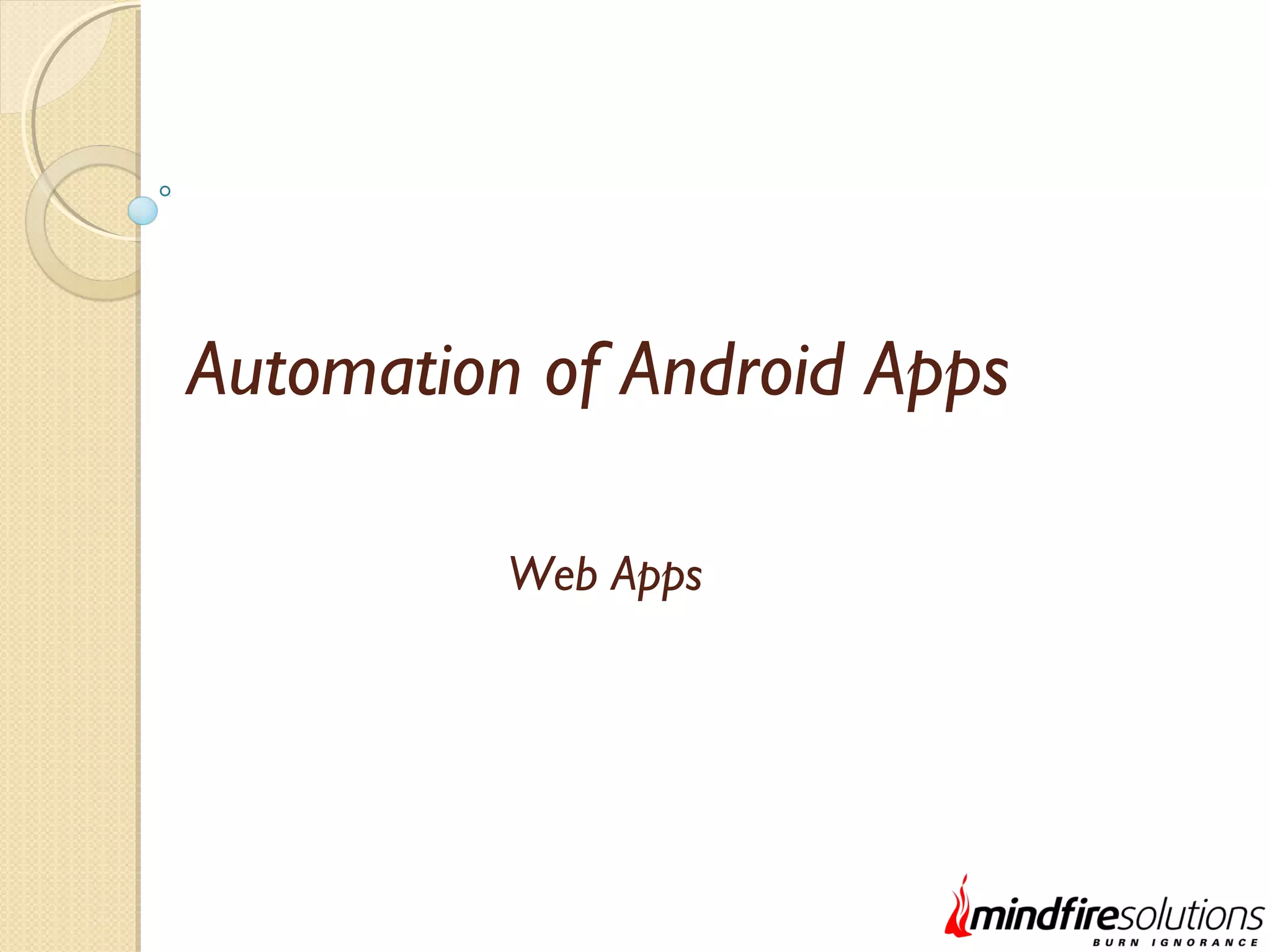
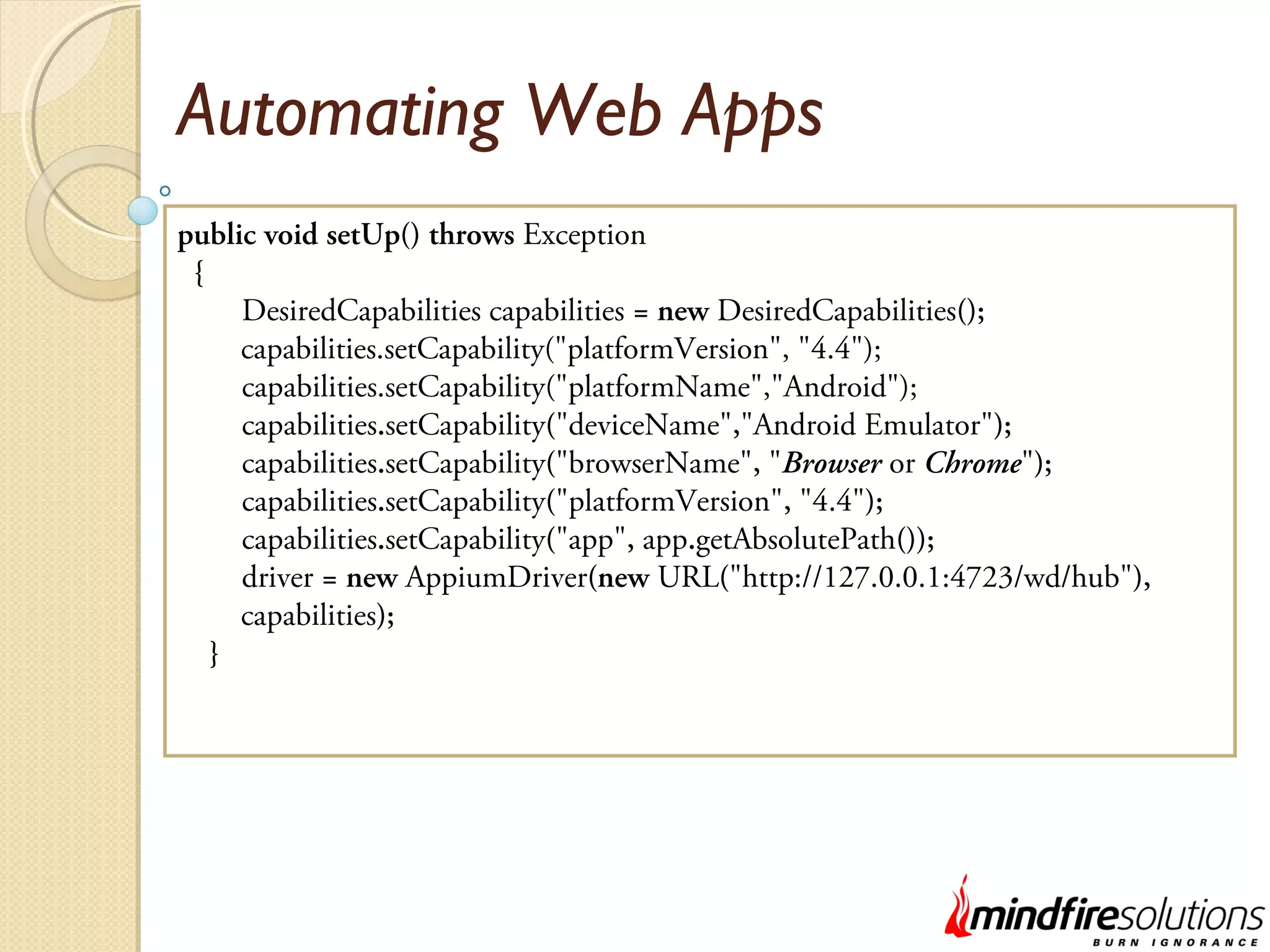
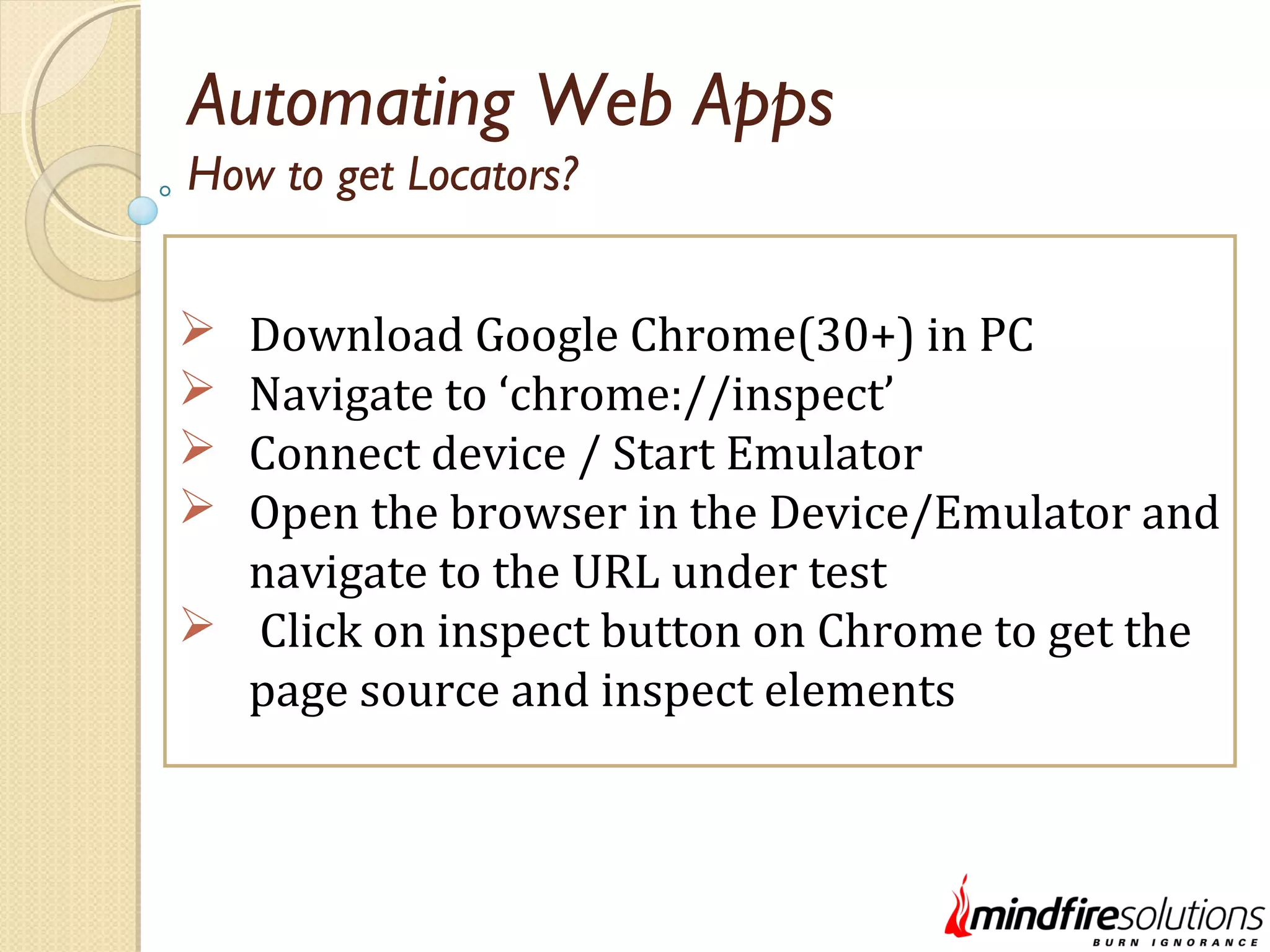
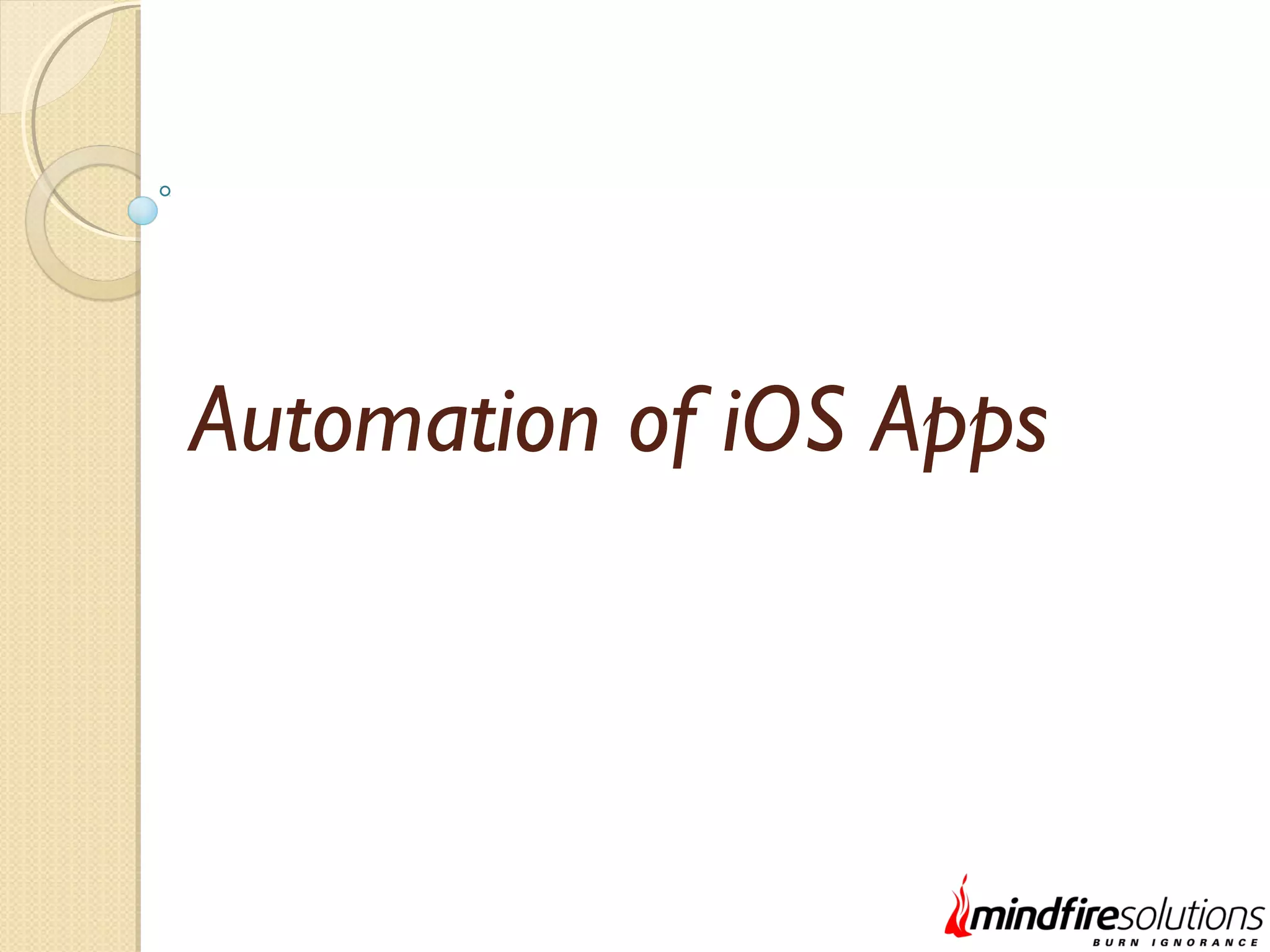
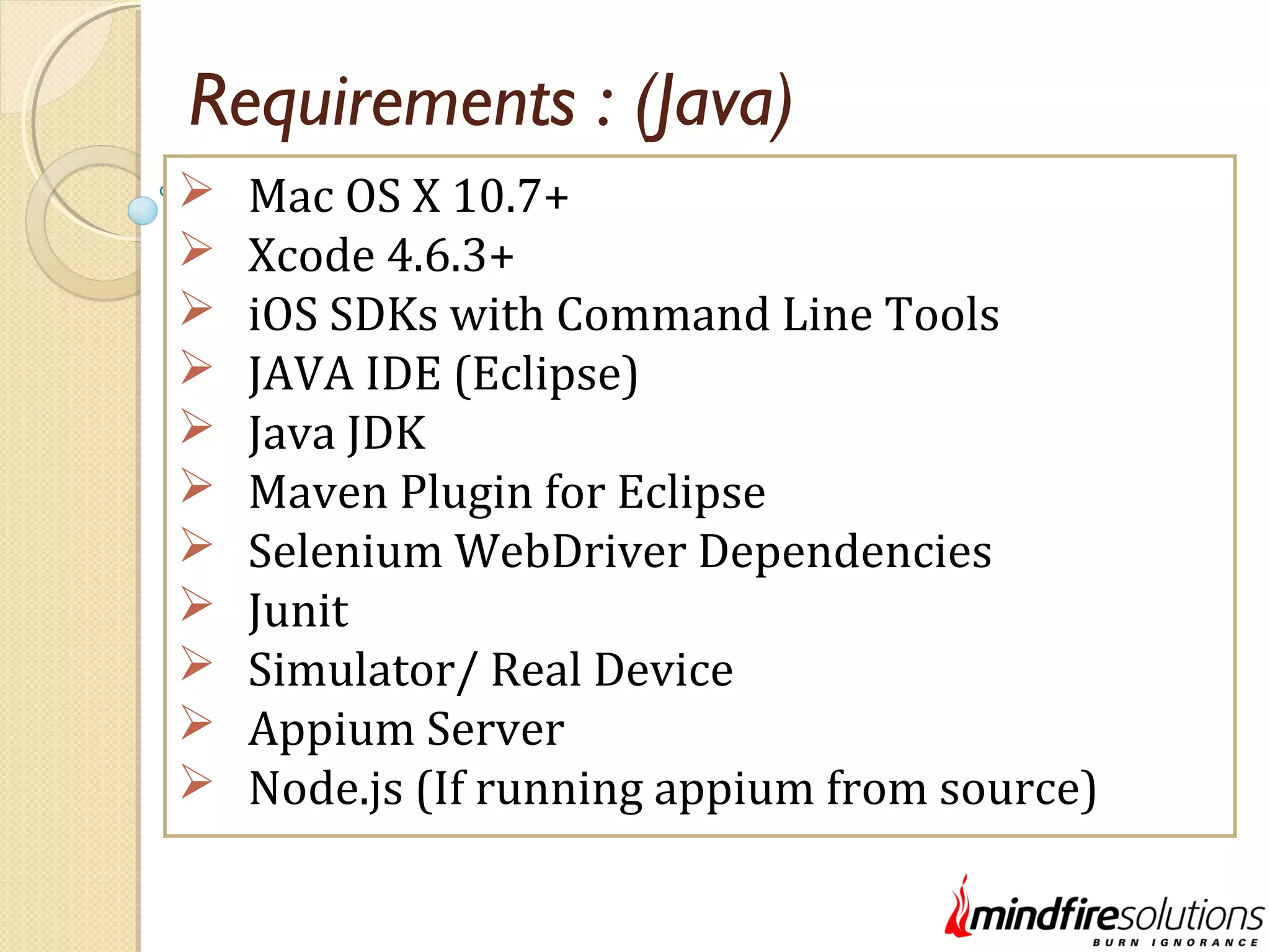
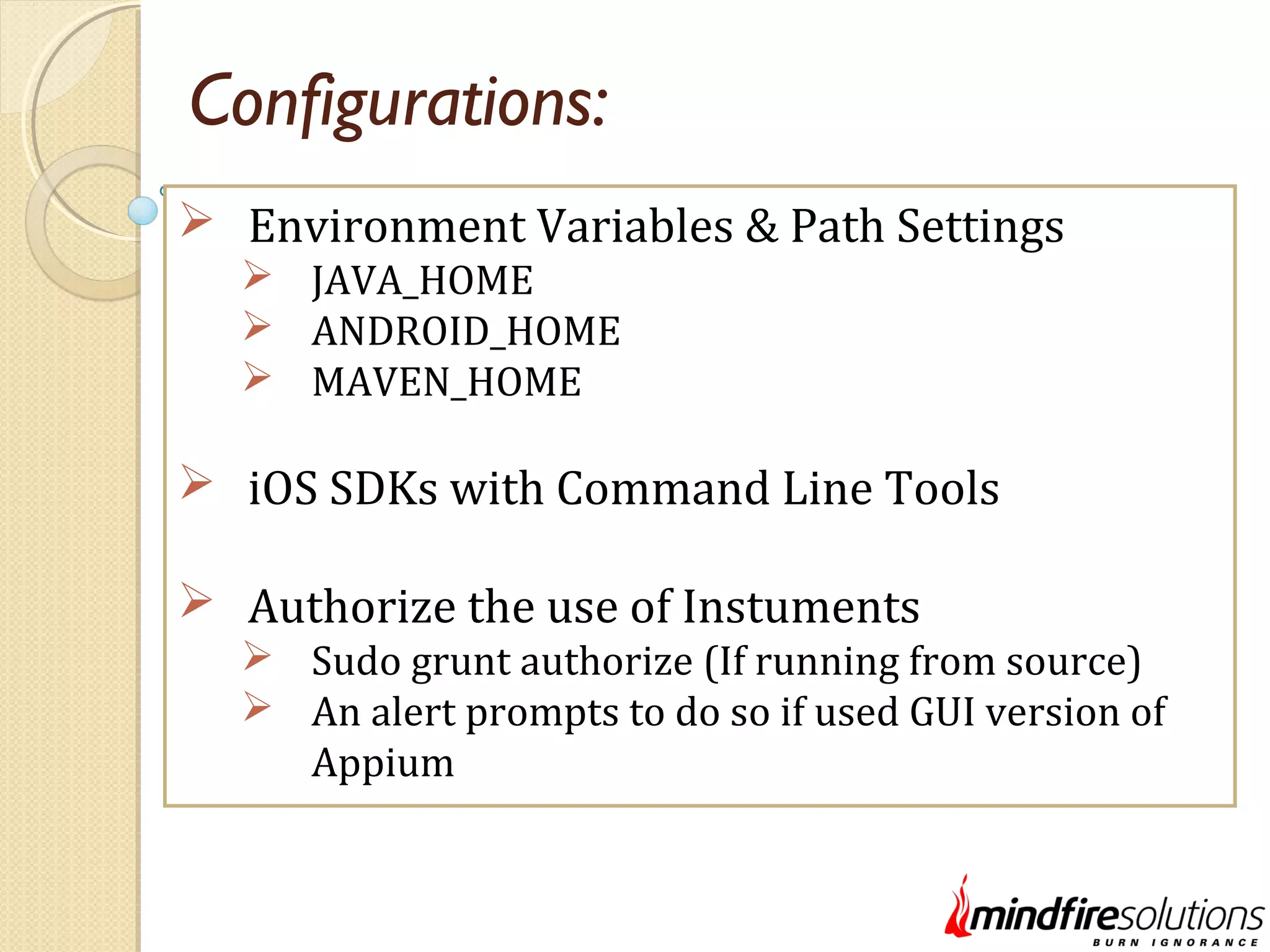
![Collecting the .app build of AUT Compile and Run the source code of AUT in iOS Simulators Navigate to Library Application Support→ → iPhone Simulator [version] Applications→ → → [choose_folder_which_belongs_to_compiled_pro ject] application_name.app→](https://image.slidesharecdn.com/androidiosautomationusingappium-140521001934-phpapp01/75/Android-iOS-Automation-Using-Appium-26-2048.jpg)
